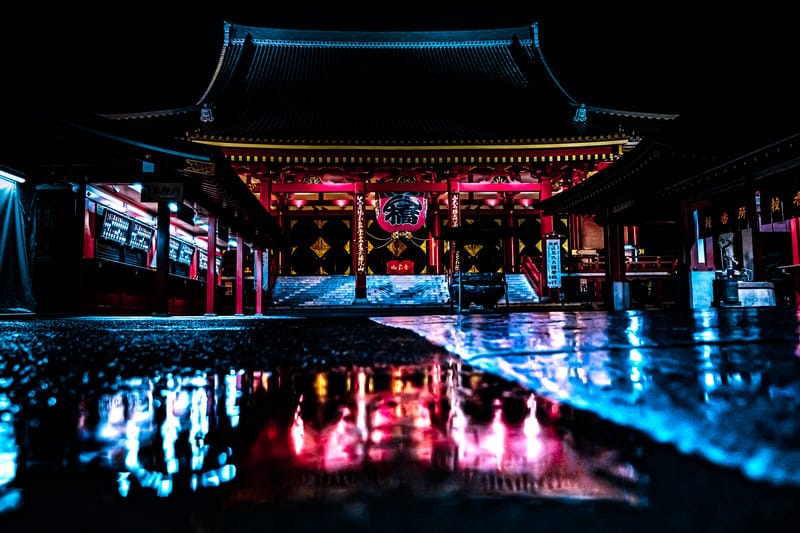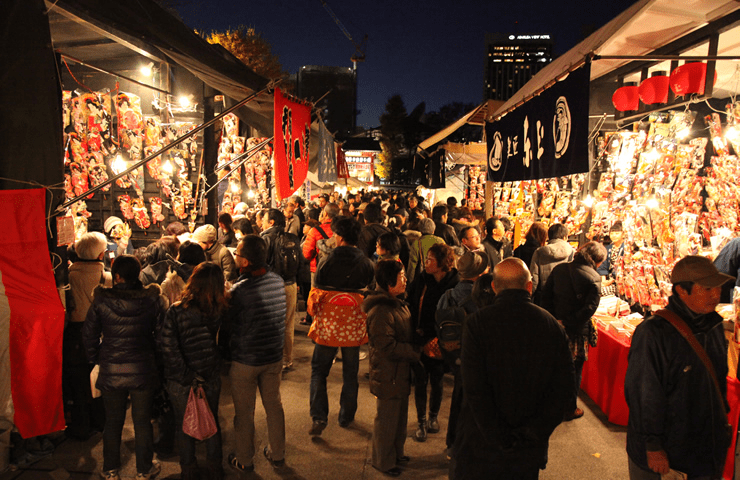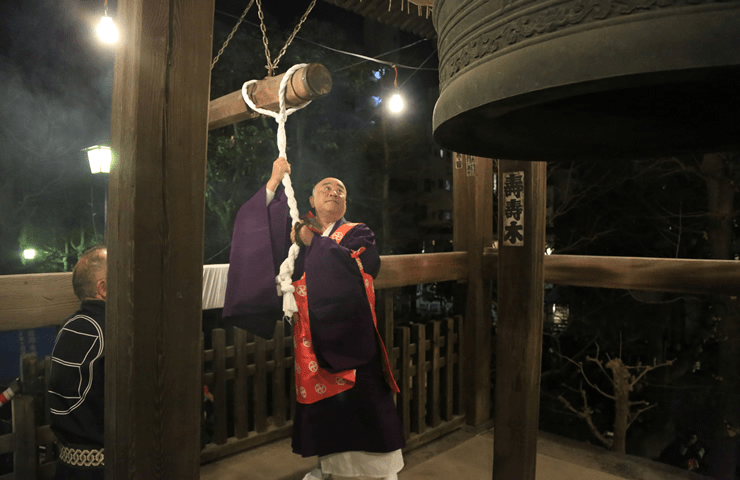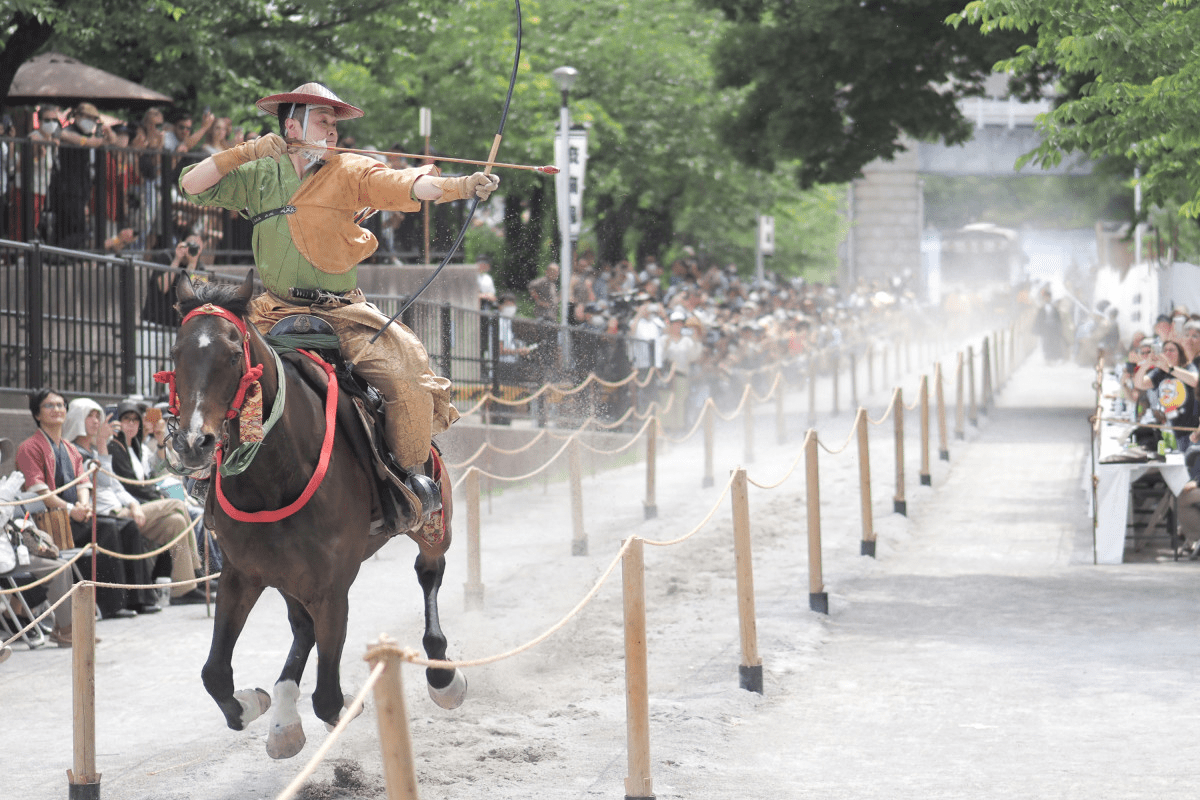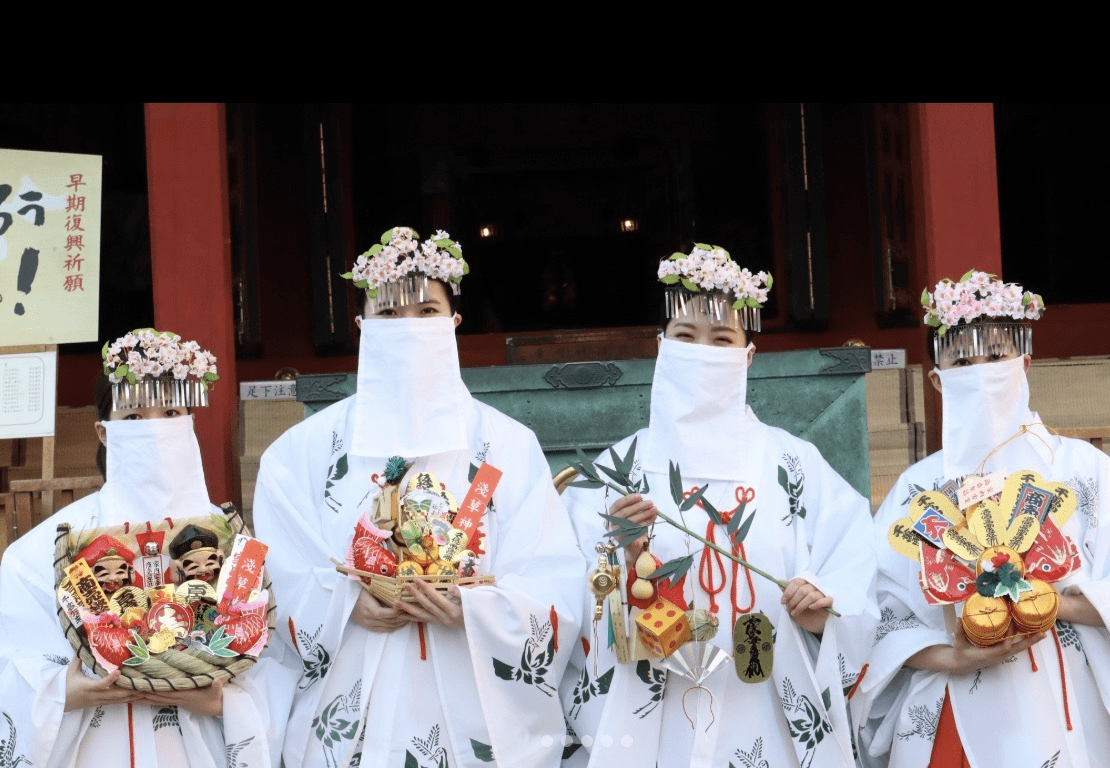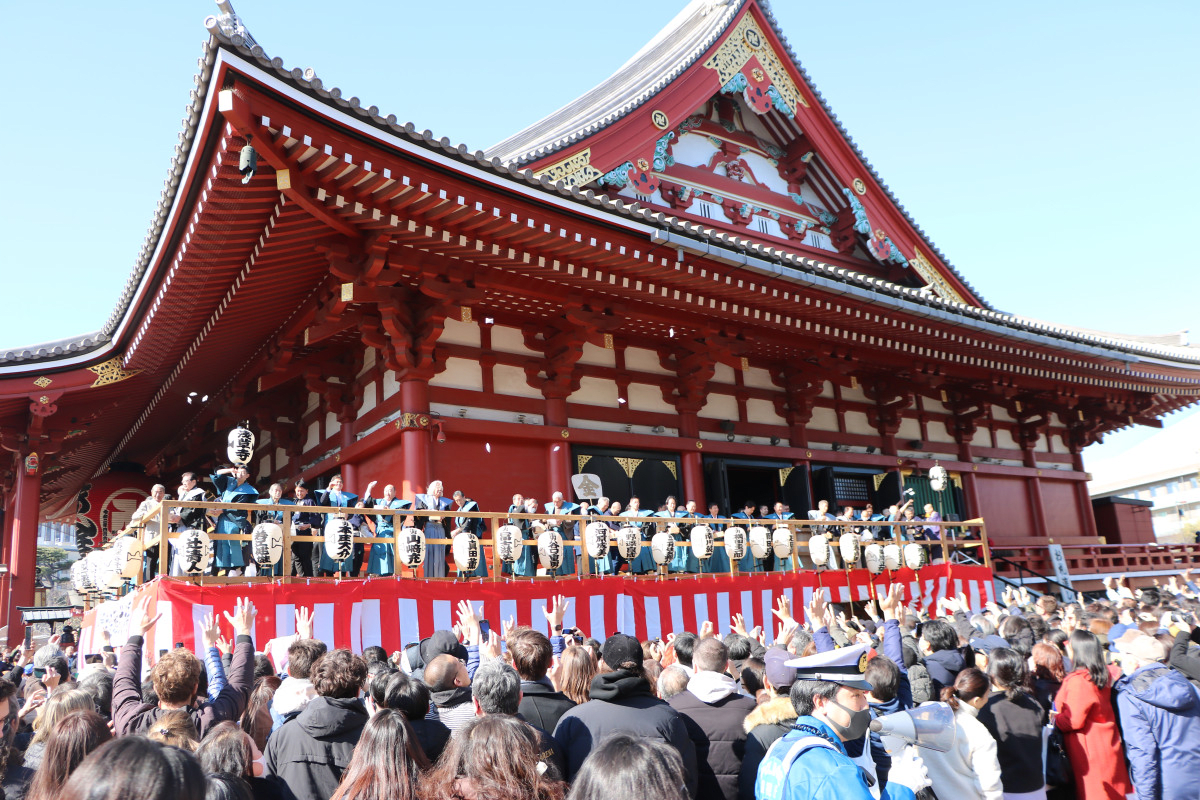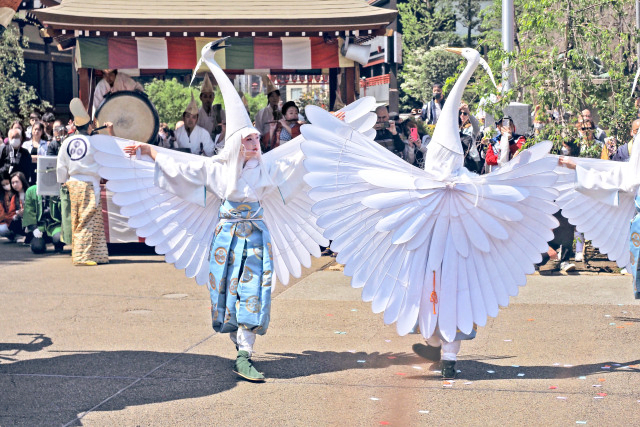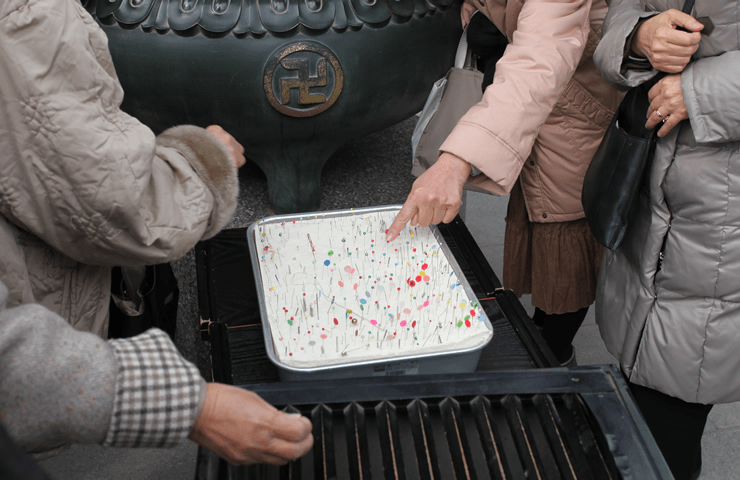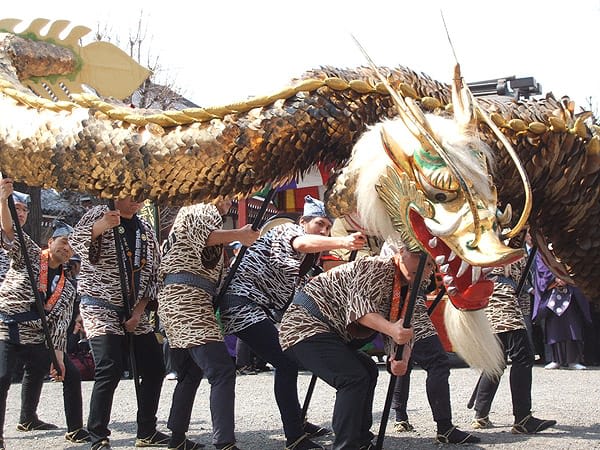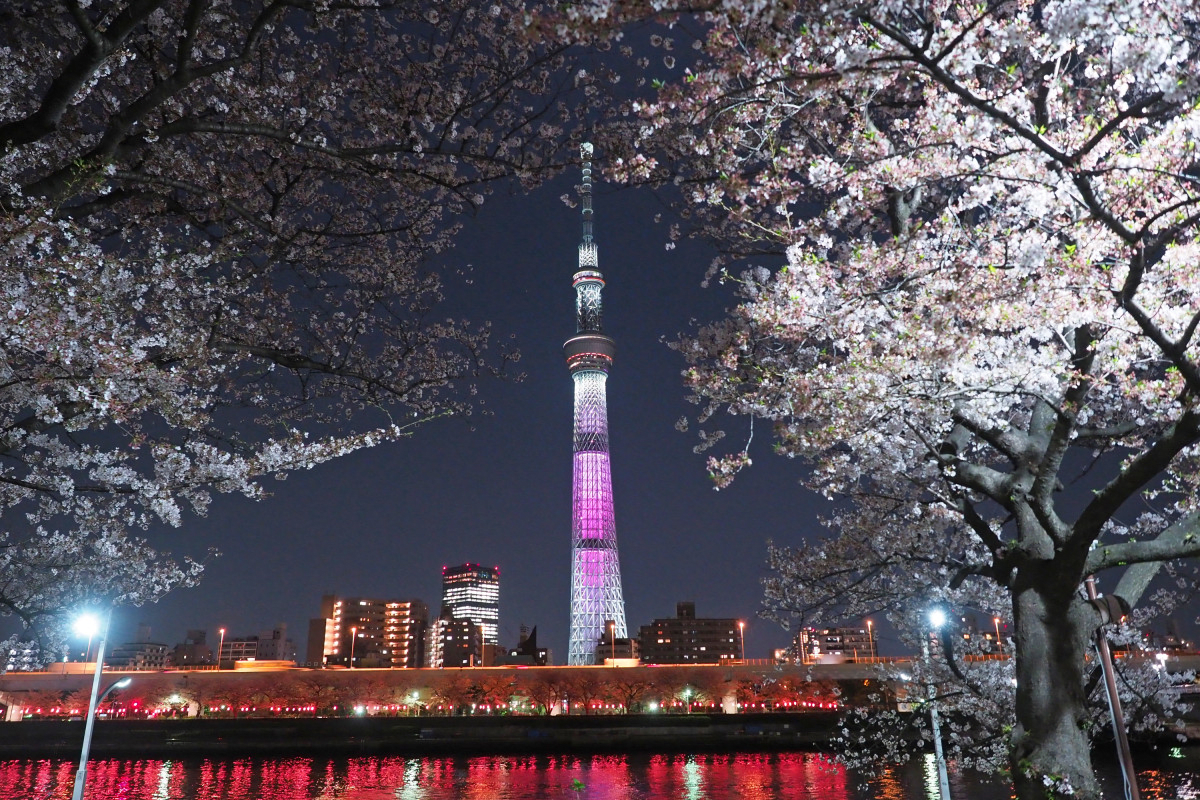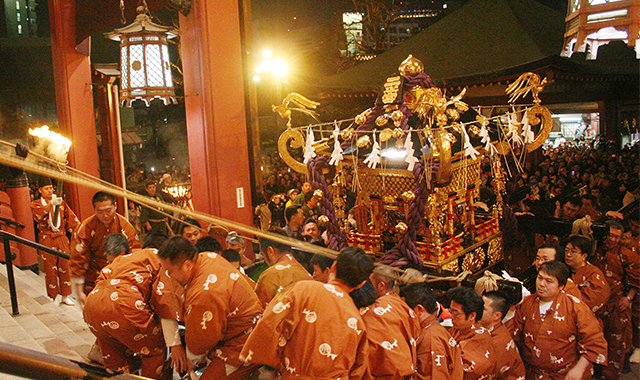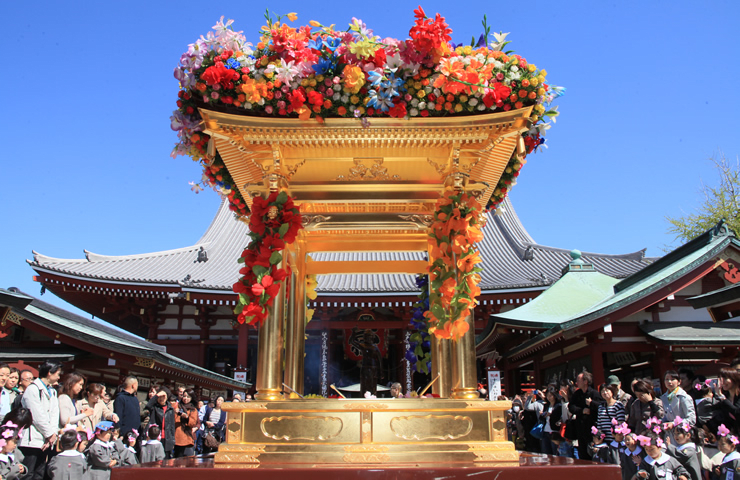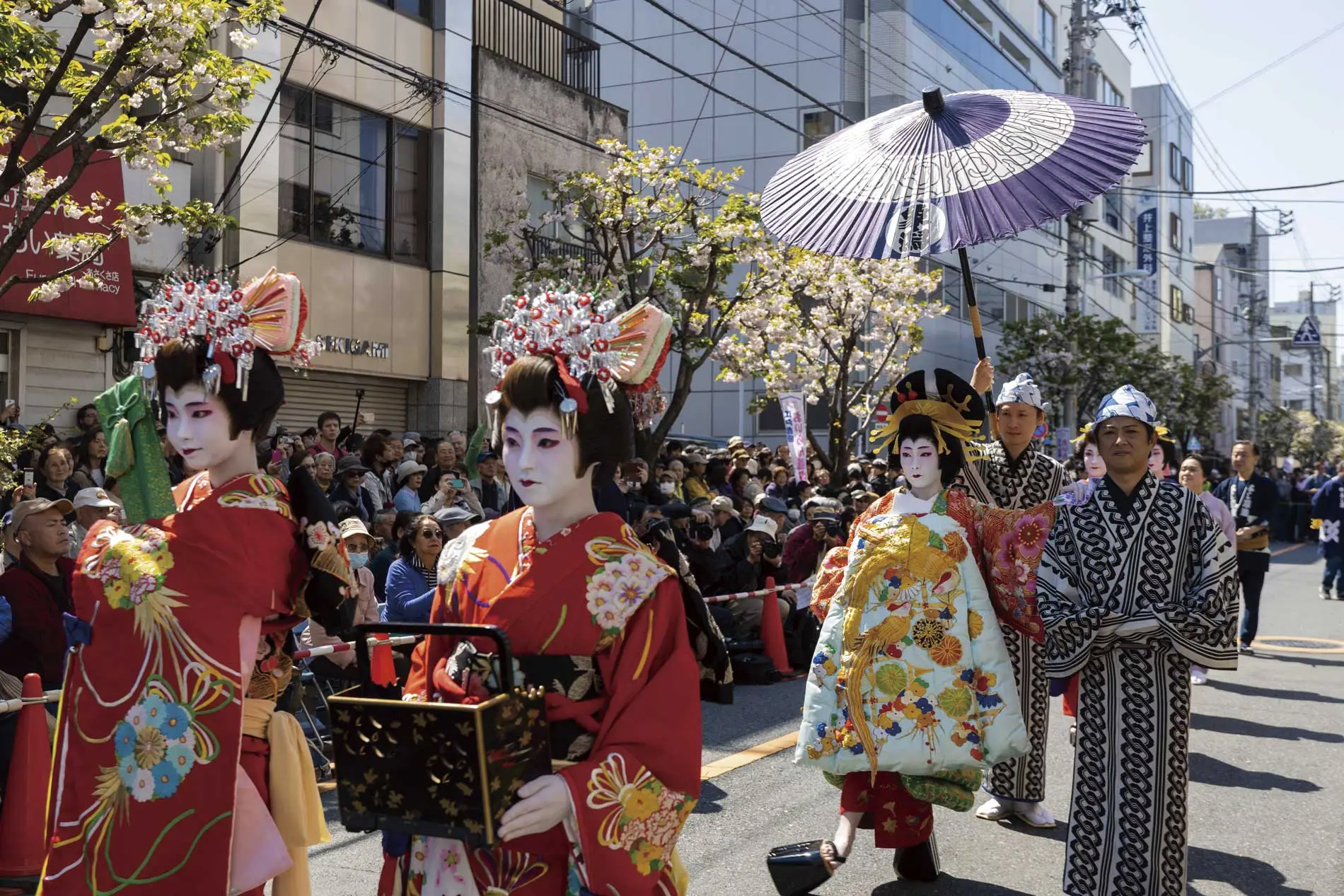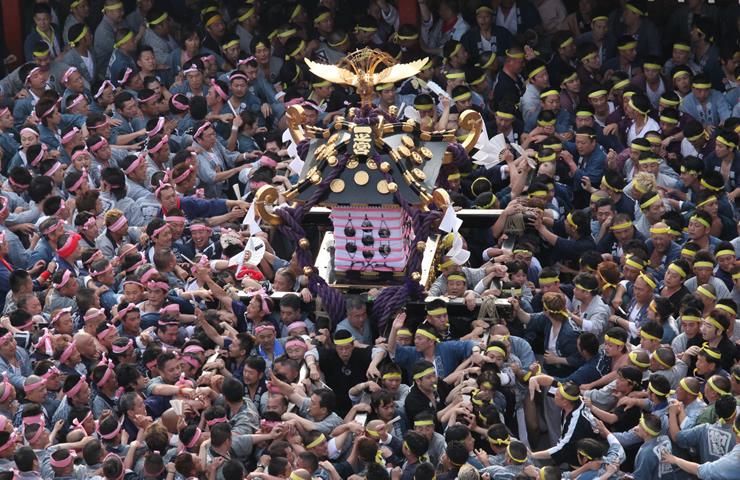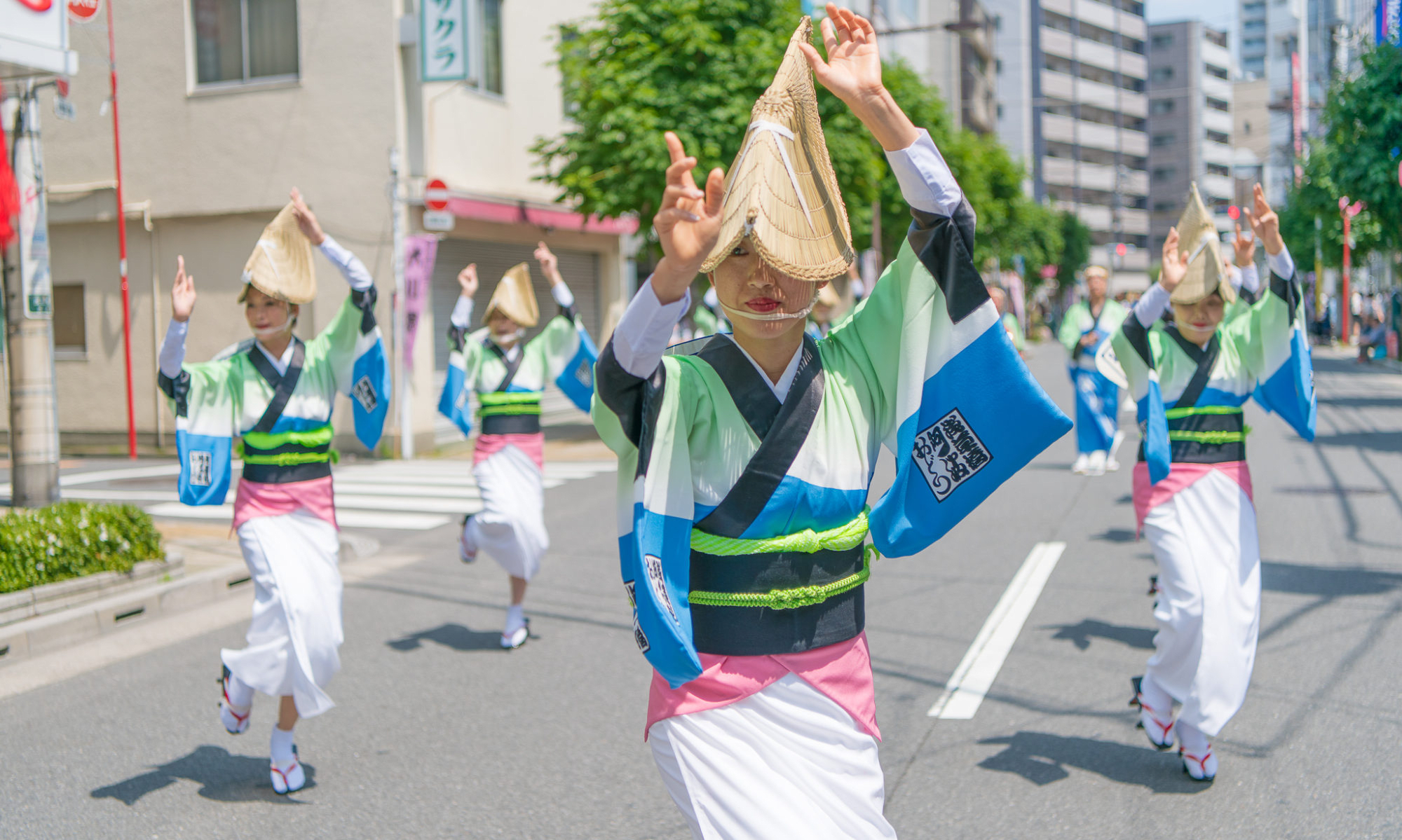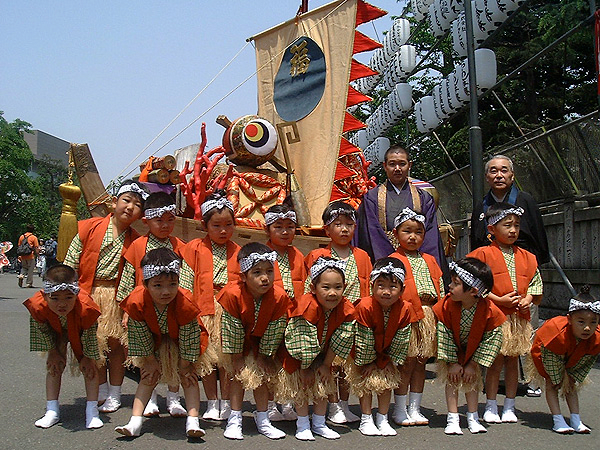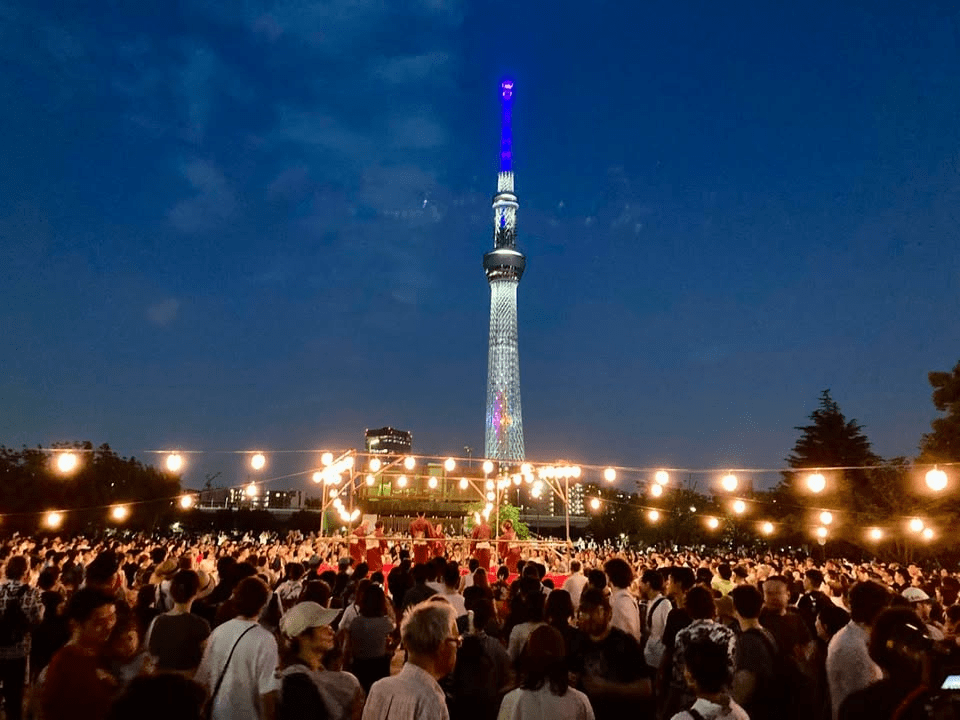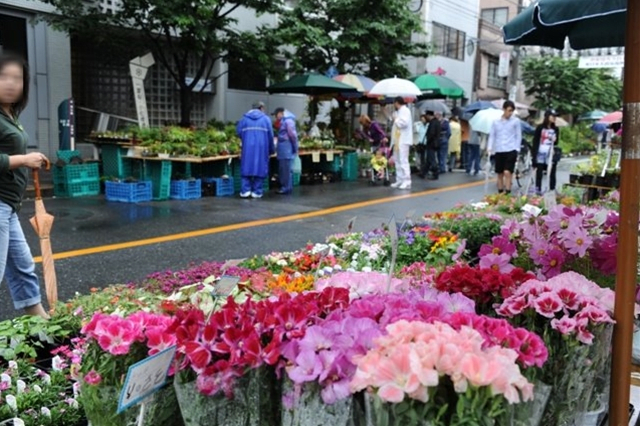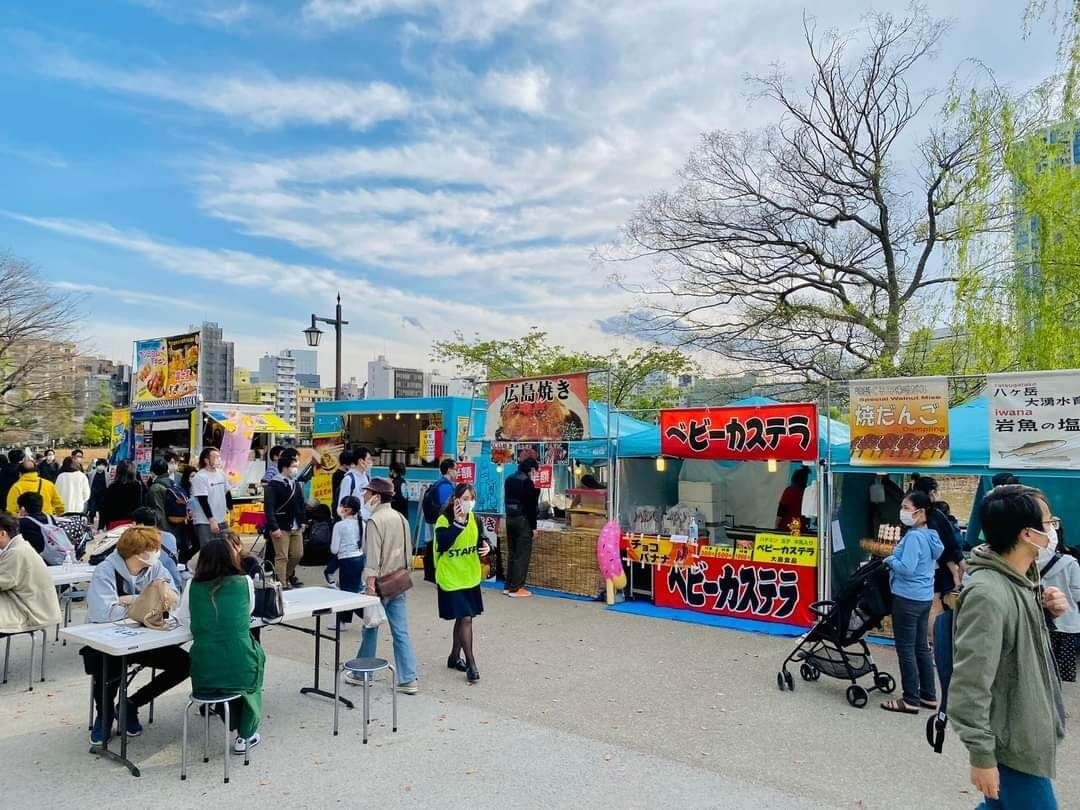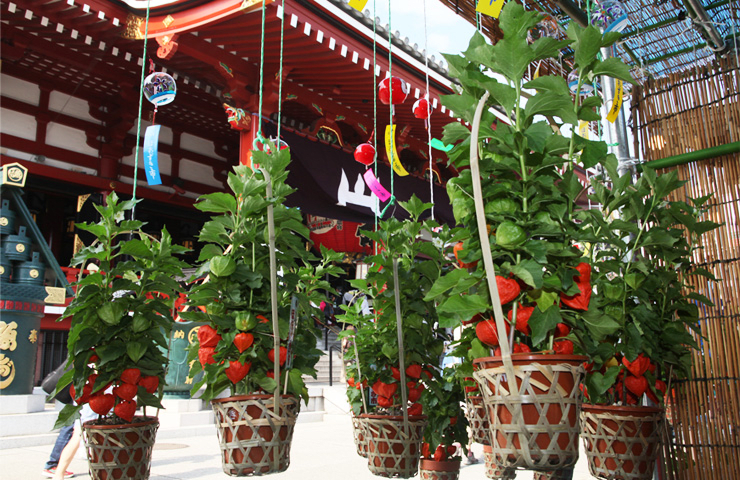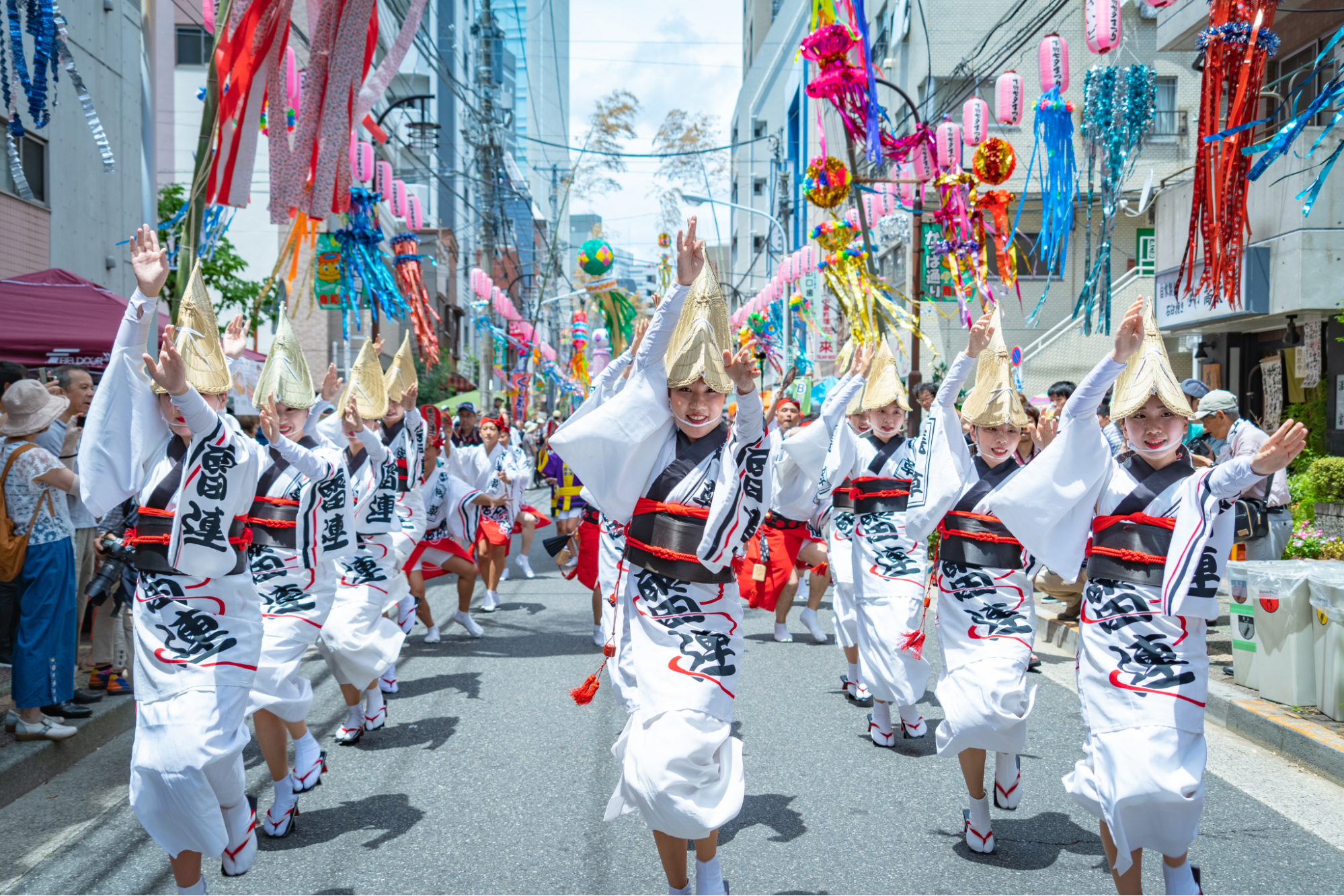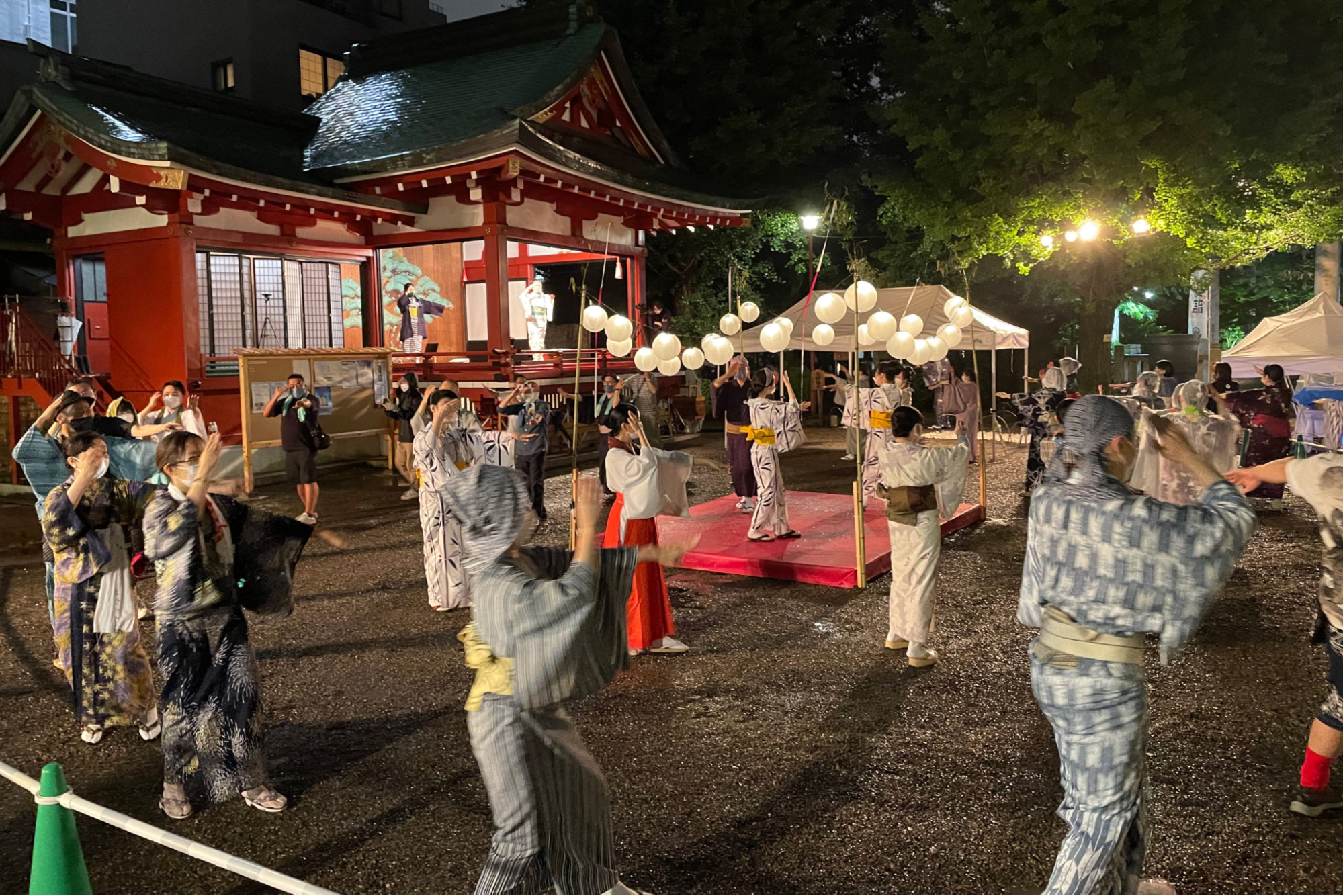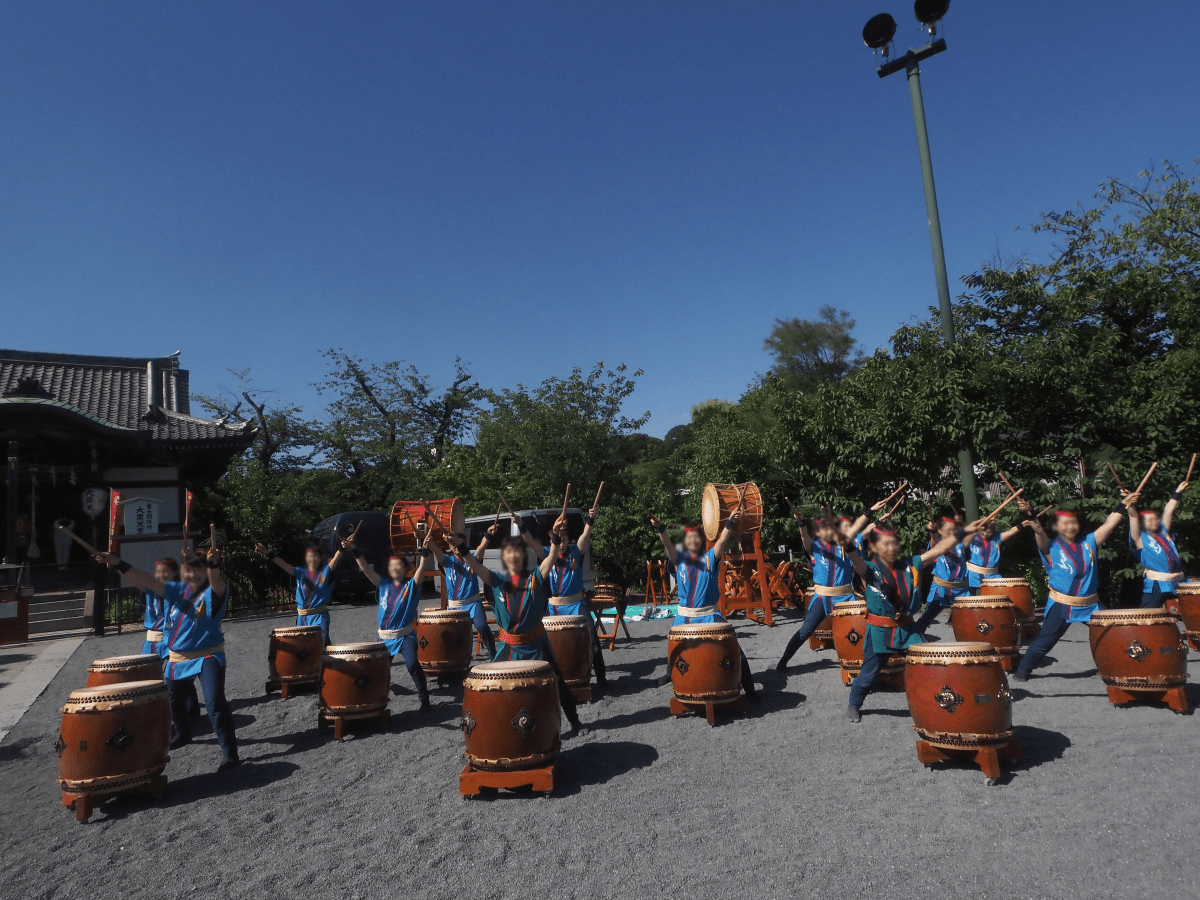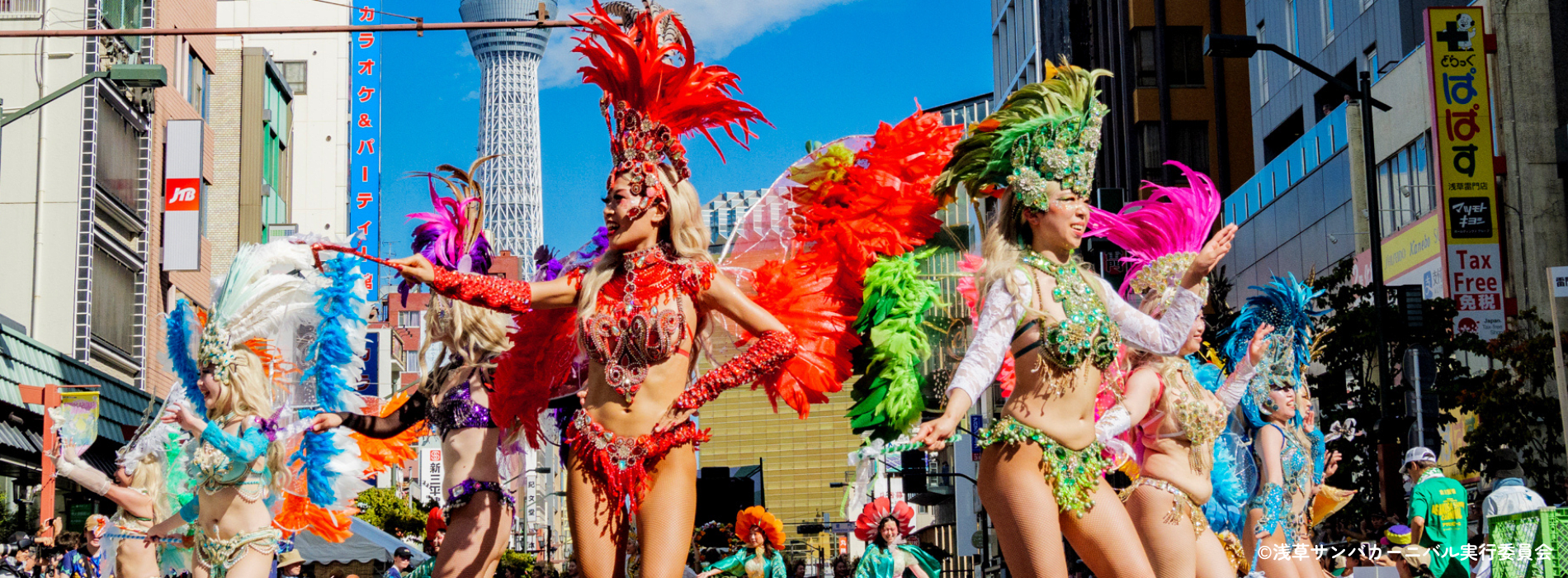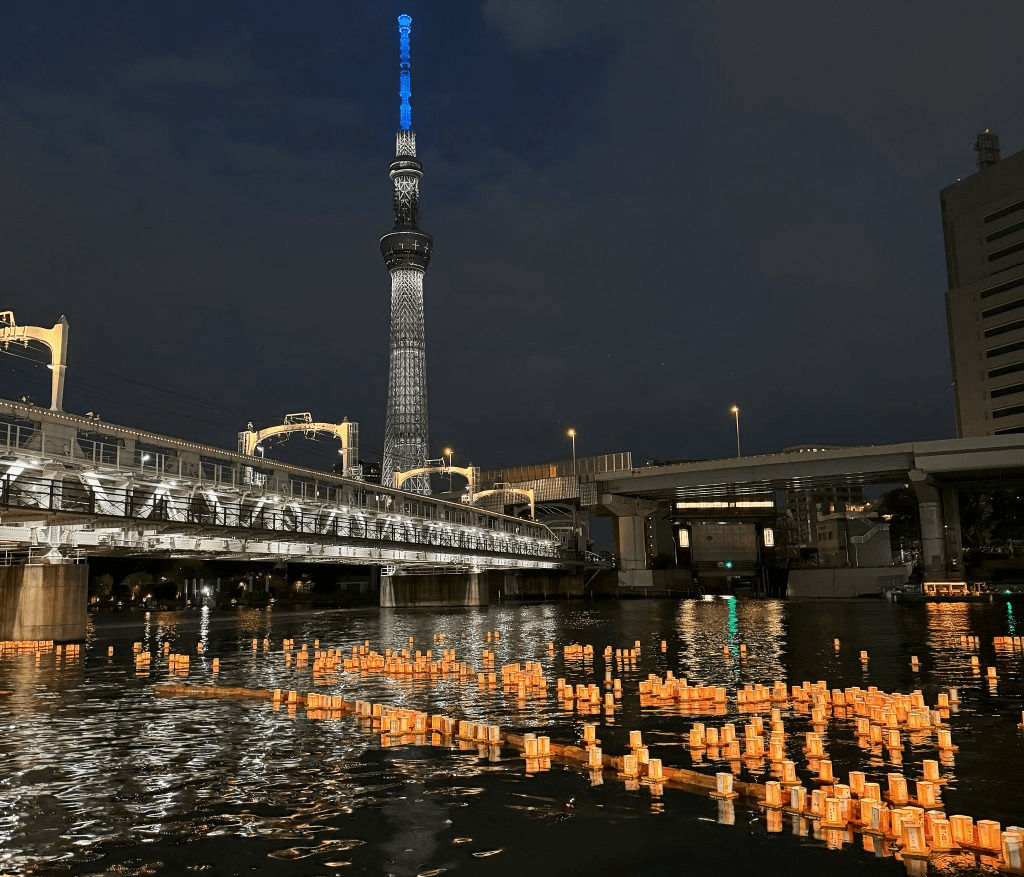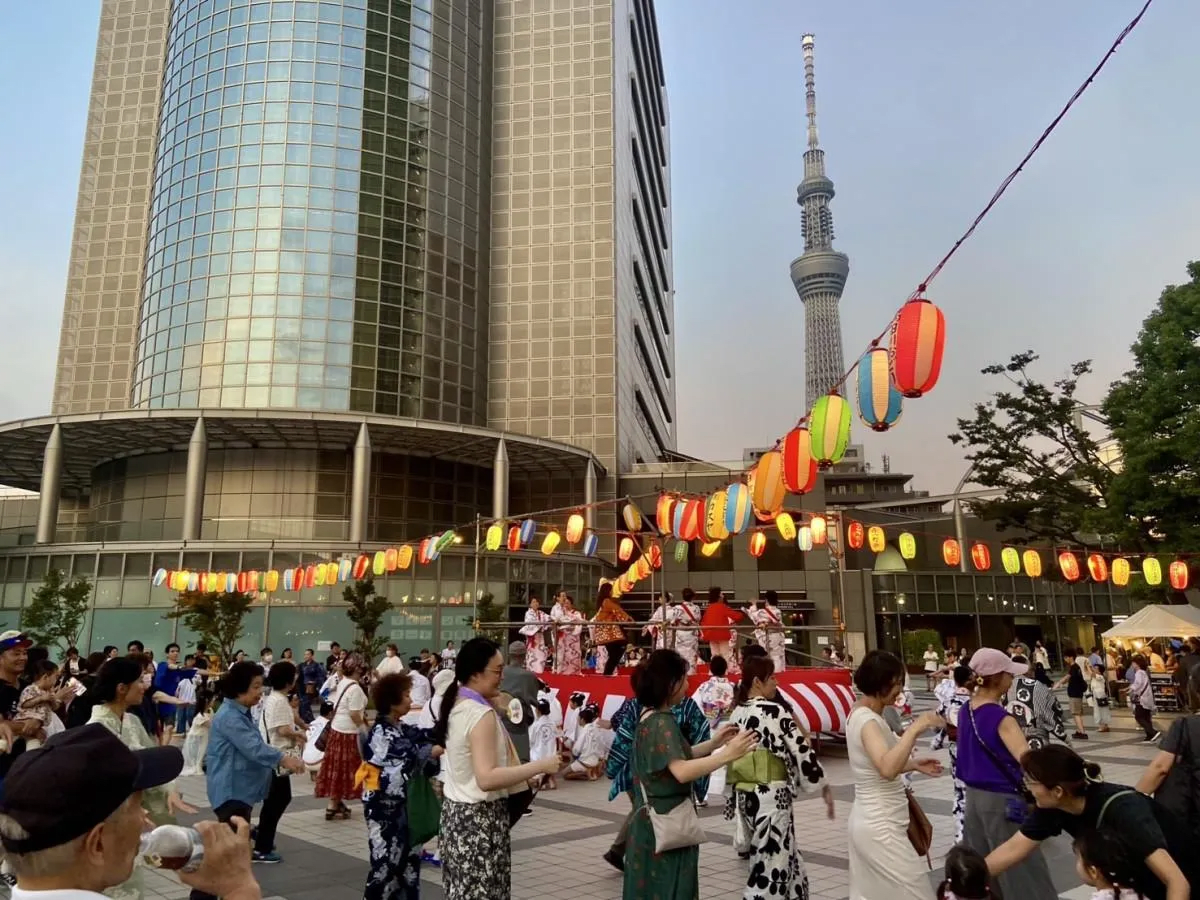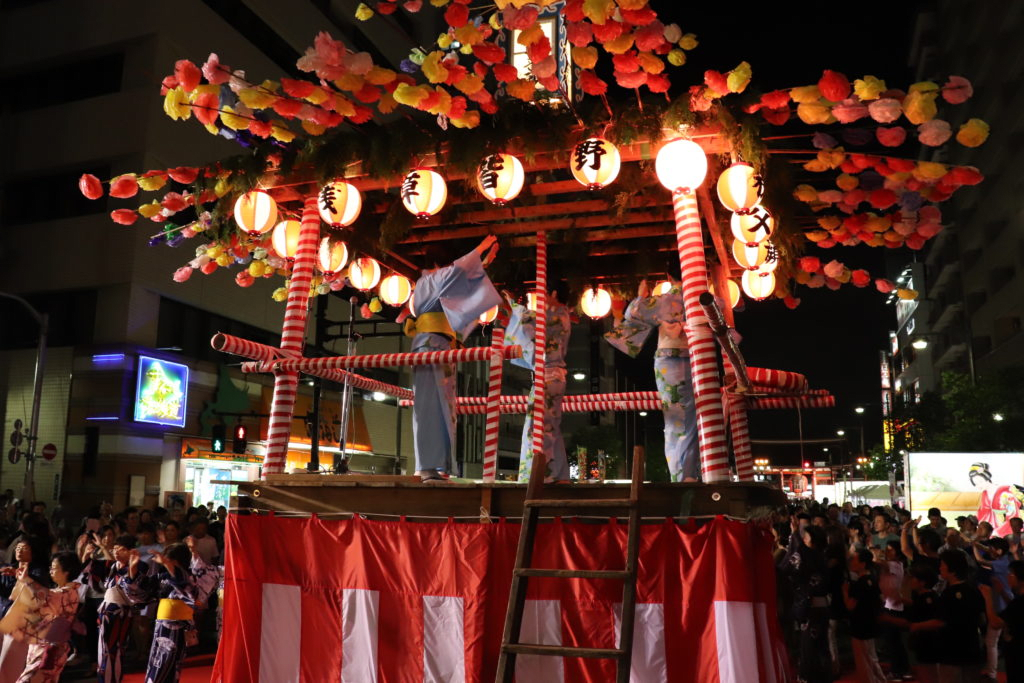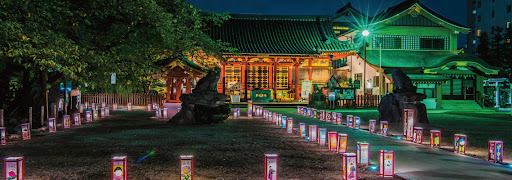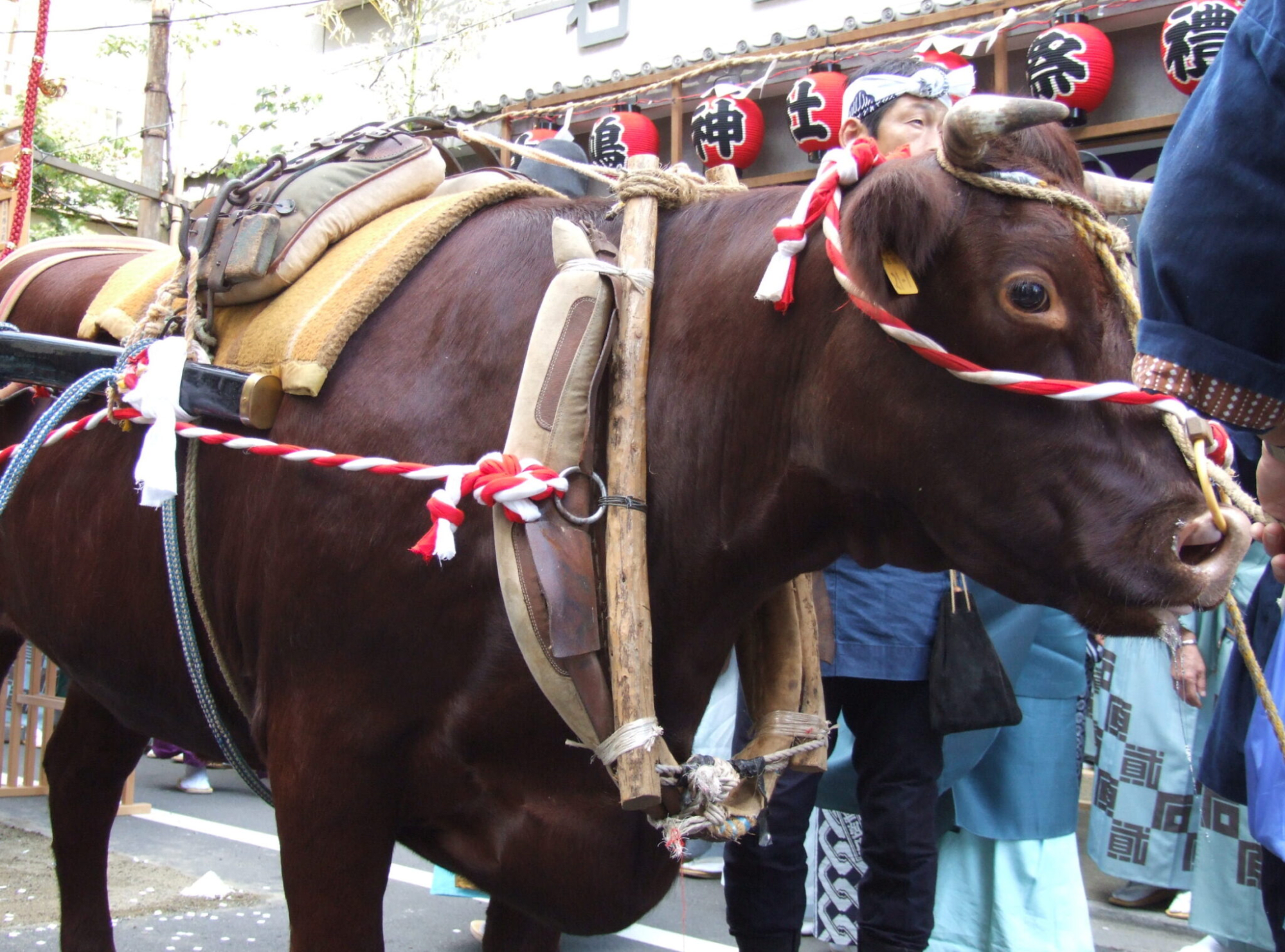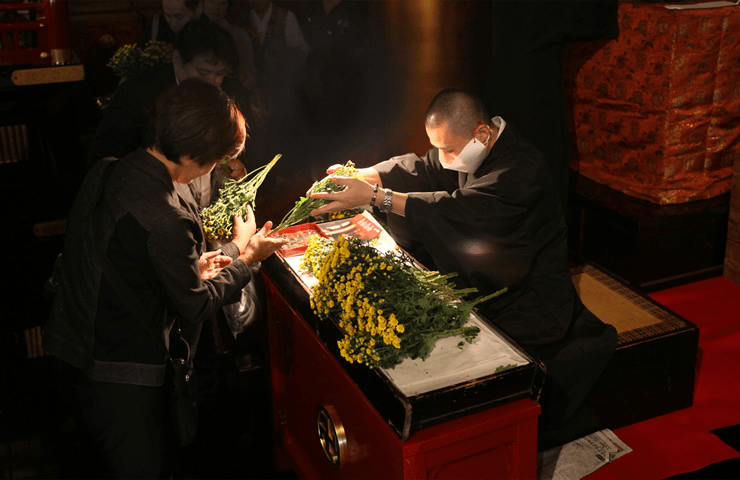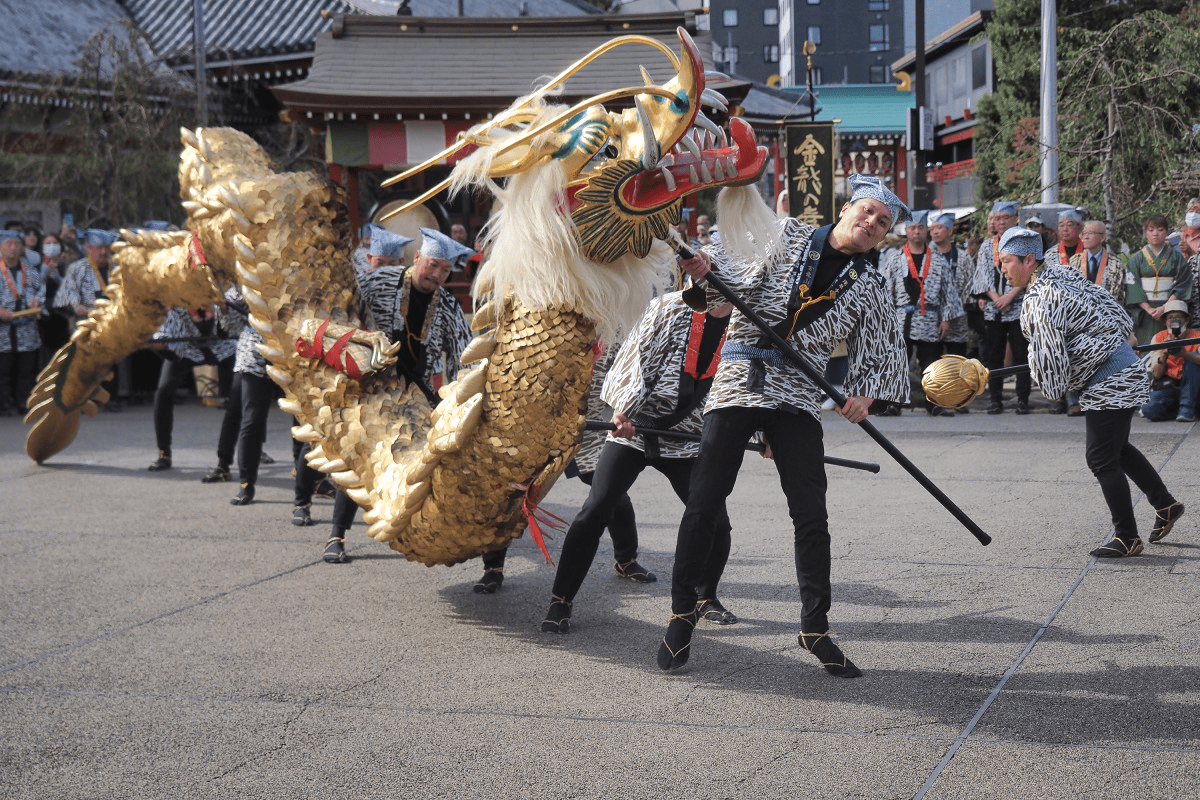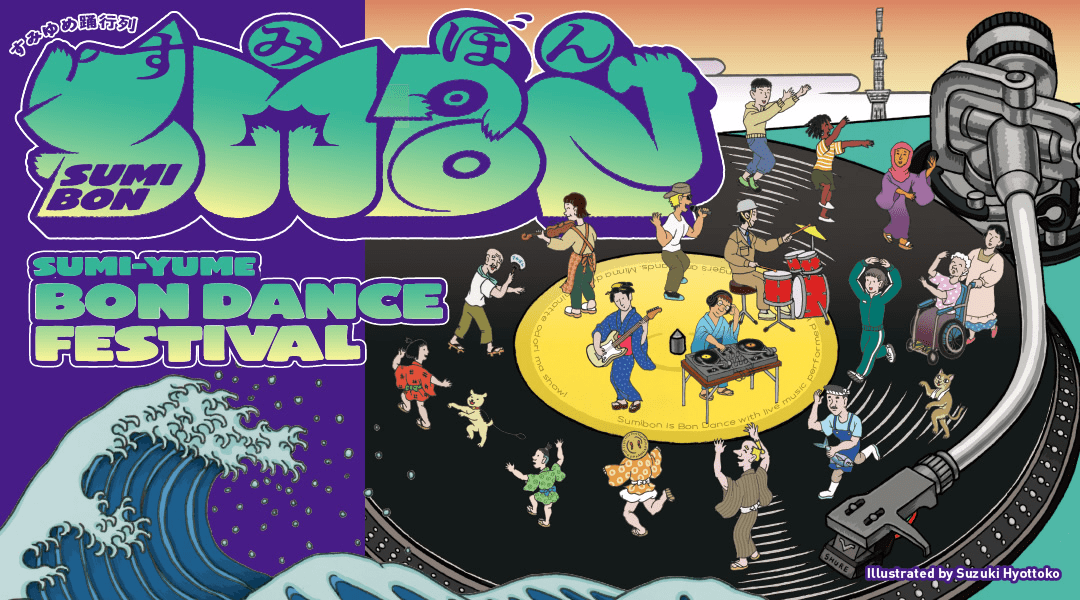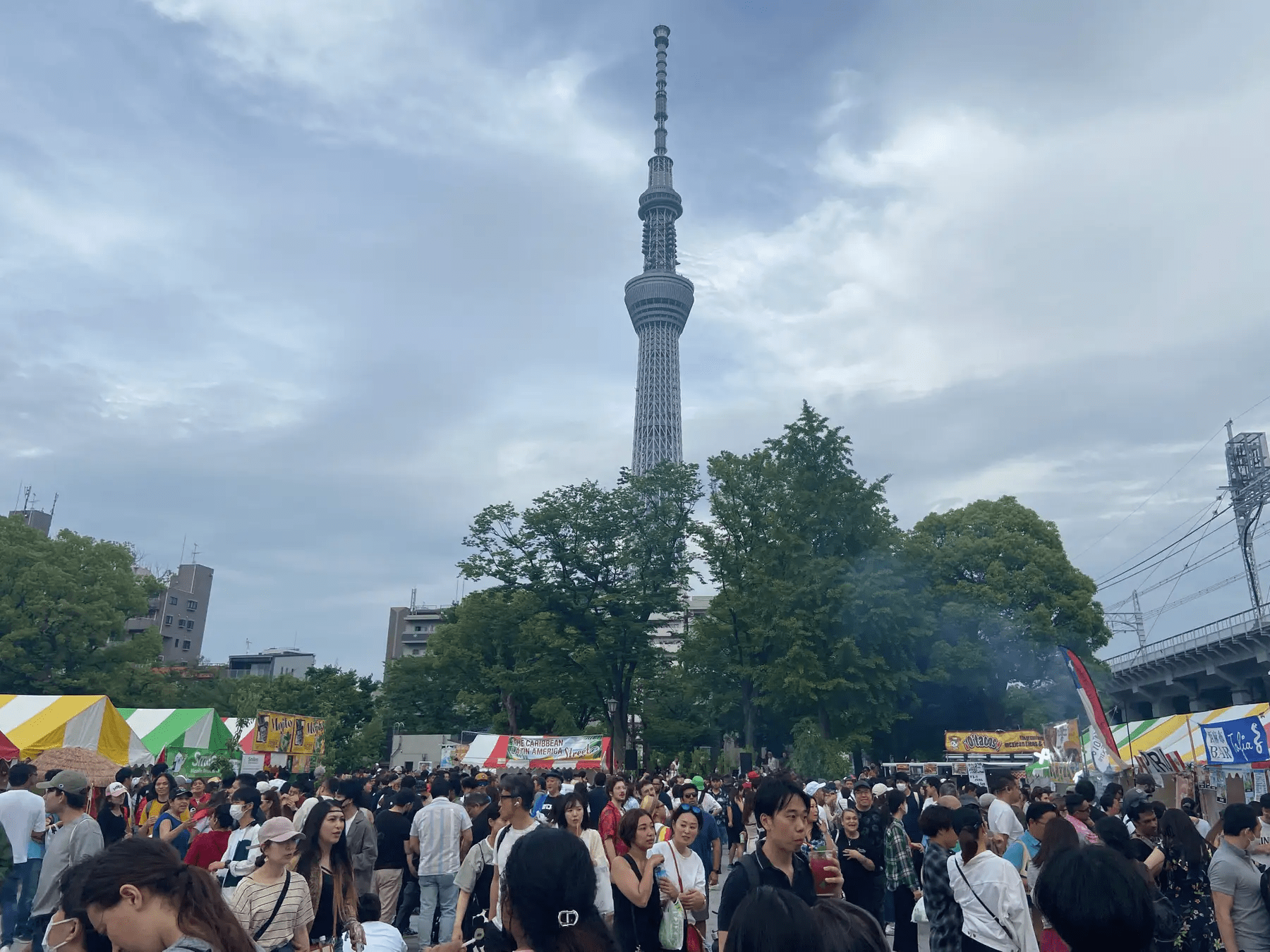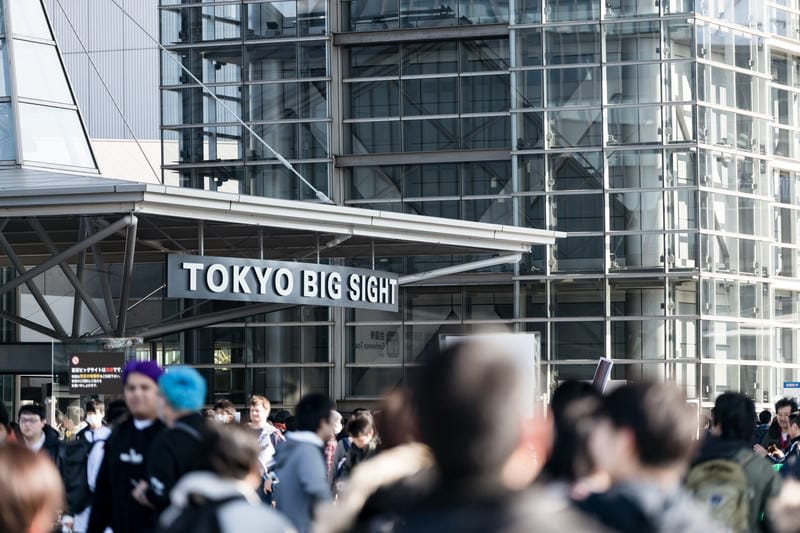Asakusa Events 2025-2026: Complete Festival Guide with Dates, Maps & Access (Sanja Matsuri, Sumida Fireworks & More)
Asakusa is an area packed with various tourist attractions, from historical buildings such as Kaminarimon and Sensoji Temple, to Japan's oldest amusement park "Hanayashiki," and "Kappabashi Dougu Street" where specialty stores related to cooking are gathered. Senso-ji Temple, Tokyo's oldest temple, has long attracted many worshippers, and it is said that various genres of shops have gathered here due to the development of commerce along the approach (the path to shrines and temples) and entertainment in neighboring areas.
While traditional events are the main focus in Asakusa, many gourmet and modern events are also held. This guide will introduce notable Asakusa events from December 2025 to December 2026 in Asakusa and surrounding areas such as Ueno and along the Sumida River, including their highlights, basic information, event dates, and access to venues.

3 Selected Asakusa Events in December 2025
The Asakusa events held in December are mainly related to Christmas and New Year's, and there are fewer events compared to other months.
Among them, my recommendation is the "New Year's market," which receives particular attention throughout the year. If you're visiting Japan in December, why not visit Asakusa to coincide with the "New Year's market"?
Toshi no Ichi (Hagoita Market)
Source:Official website
New Year's market (Hagoita Market) began in the Edo period when New Year's goods and lucky charms were sold at Sensoji Temple. When "Hagoita (paddles used for playing battledore)" began to be sold at the end of the Edo period as gifts to celebrate the birth of baby girls, Hagoita gradually became more widely available, and it came to be called "Hagoita Market."
In modern times, a wide variety of Hagoita are sold, from those with traditional kabuki motifs to collaborations with popular anime, and designs featuring people who became newsworthy that year or social satire. The uniquely crafted Hagoita are lined up so closely together that it's enjoyable just to look at them.
<Information>
- Dates: December 17, 18, 19, 2025
- Access: 5-minute walk from Asakusa Station on the Ginza Line
- Admission: Free
- Website: https://www.senso-ji.jp/annual_event/21.html
Hanayashiki Christmas Special Event
Source:PR TIMES
At the Hanayashiki Christmas Special Event, you can enjoy Christmas shows, limited edition food, and illuminations at Hanayashiki, Japan's oldest amusement park.
The highlight is the "Hana Hana Christmas Show" by the "Hanayashiki Troupe," where you can dance along to Christmas songs and get excited with original mini-games. In the park, there's also a service where if you say "Merry Christmas" to Santa Claus who appears twice a day, you'll receive Christmas-themed merchandise.
This is an Asakusa event that can be enjoyed by everyone from children to adults, so it's recommended for families with children.
<Information>
- Dates: December 2025 (to be determined)
- Access: 5-minute walk from Asakusa Station on the Tsukuba Express
- Admission: Adults 1,600 yen, 65 years and older/5 years to elementary school students 800 yen
- Website: https://www.hanayashiki.jp/news/archives/20241101/ (2024 site)
Joya no Kane (Tentaku Memorial Service)
Source:Official website
New Year's Eve Bell (Tentaku Memorial Service) is an Asakusa event held at Sensō-ji Temple where bells are struck from midnight on January 1st to celebrate the beginning of the new year. This is a Japanese custom performed to remove the 108 worldly desires that humans possess by striking the bell 108 times, welcoming the new year with a pure heart.
At Sensō-ji Temple, it is customary for members of a group called "108 meetings," consisting of local residents as well as kabuki actors and rakugo performers associated with Asakusa, to strike the bell. As you listen to the solemn resonance of the bell being struck slowly, one time at a time, you'll naturally feel your heart becoming calm.
<Information>
- Date: December 31, 2025
- Access: 5-minute walk from Asakusa Station on the Ginza Line
- Admission: Free
- Website: https://www.senso-ji.jp/annual_event/24.html
Asakusa Event Calendar for 2026
| New Year and Winter (January–February) | Spring (March–May) | Summer (June–August) | |
|---|---|---|---|
| Traditional Events |
・Asakusa Yabusame ・20th Ebisu ・Setubun-e ・Fukuju-no-Mai (Dance of the Seven Lucky Gods) ・Hari-Kuyō |
・Kinryu Dance ・Honzon Jigen-e Festival ・Bussho-e / Flower Festival ・Asakusa Kannon-ura Ichiyo Sakura Festival ・Sanja Matsuri ・Dance of Treasures |
・46,000-Day Festival & Ground-Cherry Market ・Summer Pilgrimage at Asakusa Shrine ・Sumida River Lantern Festival |
| Natural Highlights |
・Sumida Park Cherry Blossom Festival ・Cherry Blossom Viewing at Senso-ji Temple and Ueno Onshi Park |
・Ofuji-san Plant Fair | |
| Special Experiences | ・Asakusabashi Red-&-White Marronnier Festival |
・Oku-Asakusa Bon-Odori Festival ・Sumida River Fireworks Festival ・Shitamachi Tanabata Festival ・Ueno Summer Festival ・Sumida River Dance Festival |
|
| Gourmet Events | ・Ueno de Food Fest |
| Autumn (September–November) | Winter (December) | |
|---|---|---|
| Traditional Events |
・Kaminarimon Bon Odori Festival ・Asakusa Lantern Festival ・Ushijima Shrine Festival ・Chrysanthemum Memorial Service ・Dance of the Golden Dragon ・Tori-no-Ichi Festival ・Fire-Walking Ritual ・Dance of the White Heron |
・New Year's Market (Hagoita Market) ・New Year's Eve Bell (Tentaku Memorial Service) |
| Natural Highlights | ||
| Special Experiences |
・Asakusa Kokusai Street Beat Festival ・Sumiyume Dance Parade ・Caribbean & Latin America Street at Sumida Jazz |
・Hanayashiki Christmas Special Event |
| Gourmet Events |
To Deeply Enjoy the Asakusa Area, Ask Local Guides Various Questions Before Attending Events!
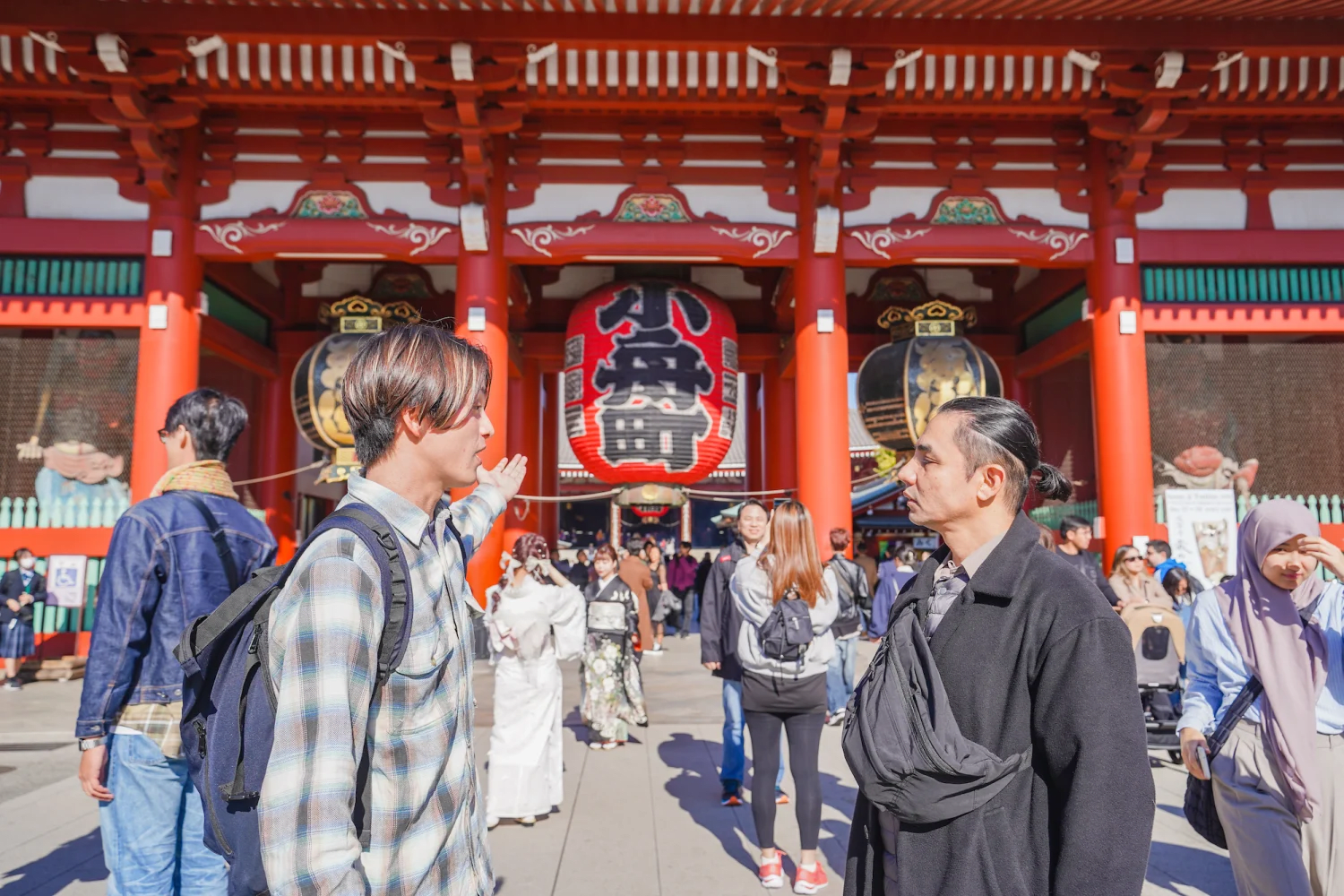
If you want to deeply enjoy the Asakusa area, I recommend asking various questions to local guides before attending events. The Asakusa Cultural Walk & Matcha Making Tour allows you to explore Asakusa's famous spots while receiving explanations from local guides, and you can also experience making matcha, a traditional Japanese culture.
During the tour, you'll visit Nakamise Shopping Street, which has over 300 years of history, and Sensō-ji Temple, while learning about Japanese customs and culture related to Sensō-ji Temple and Buddhism from the guide. After the walk, you can make and taste matcha in a quiet tea room, or enjoy monjayaki and okonomiyaki lunch at a shop popular with locals.
An attractive point of participating in the tour is that guides can explain traditional Japanese culture that you might miss during individual sightseeing, as well as historical backgrounds that are difficult to understand. If you have any questions during the tour, ask your guide to deepen your knowledge of Asakusa.
<Information>
- Meeting point: In front of Kaminarimon Police Box
- Tourist area: Asakusa
- Meeting time: 11:00
2026 Asakusa New Year and Winter Events
In February, Asakusa experiences its coldest temperatures of the year, with maximum temperatures around 10°C and minimum temperatures around 6°C, making thick coats and cold-weather gear essential for sightseeing. However, there is little rainfall, and clear, low-humidity days continue throughout the month.
From here, we will introduce the New Year and winter Asakusa Events taking place in 2026. All of these events allow you to experience Japanese traditions. Please check the detailed event articles for each month for access information and other details.
Notable Asakusa Events in January 2026
If you're spending the year-end and New Year holidays in Asakusa, Hatsumode (first shrine visit of the year) is a must.
Around Asakusa, famous shrines and temples are scattered throughout the area, including Sensoji Temple, which is popular as a tourist spot, as well as Kanda Myoujin Shrine and Yushima Tenjin Shrine. Each has different benefits, so choose a shrine or temple that interests you and go for your Hatsumode!
Not only Hatsumode, but many traditional events are also held, so you can sightsee efficiently by picking out events that interest you and organizing your schedule.
Hatsumode
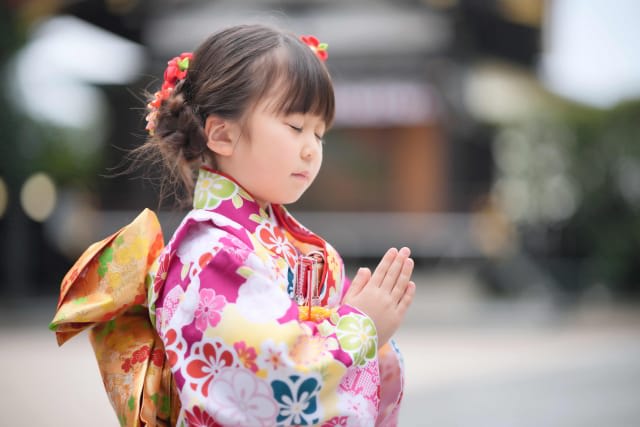
Hatsumode is a traditional Japanese event where people visit shrines and temples for the first time in the new year to pray for safety and happiness in the coming year.
Hatsumode is generally performed during "Sanganichi (January 1-3)." However, since these three days see concentrated crowds of worshippers, it's better to avoid the congestion and complete your visit by "Matsunouchi (January 7 or 15, depending on the region)" when the God of the year arrives.
Along with Hatsumode, it's also recommended to draw omikuji (fortune-telling slips) or write on ema (wooden plaques for writing wishes).
Senso-ji Temple
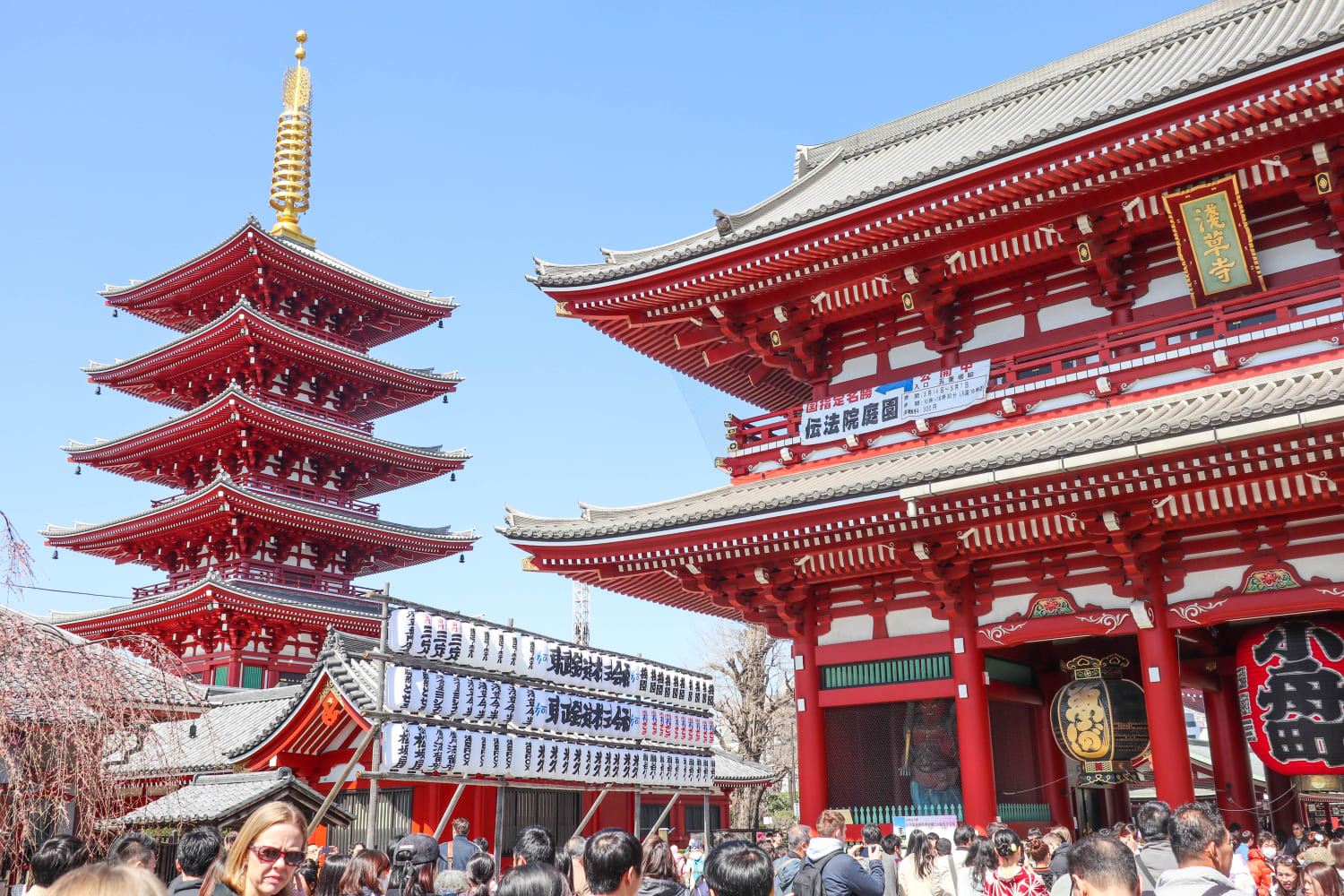
Hatsumode at Senso-ji Temple is one of Japan's leading Hatsumode spots, attracting approximately 3 million worshippers each year during "Sanganichi."
At Senso-ji Temple, "New year prayer meeting" is held every 30 minutes to 1 hour from January 1 to 7. At the "New year prayer meeting," if you apply for a prayer tablet with your name and wish written on it, a monk will pray for your wish, and you can receive the prayer tablet after the prayer. Keep the prayer tablet at home with your wishes.
If you want to enjoy the Hatsumode atmosphere at a leisurely pace, you can worship relatively smoothly by avoiding late night on New Year's Eve and daytime during "Sanganichi" when crowds concentrate.
<Information>
- Date: January 1, 2026
- Access: 5-minute walk from Asakusa Station on the Ginza Line
- Admission: Free
- Website: https://www.senso-ji.jp/
Kanda Myoujin Shrine
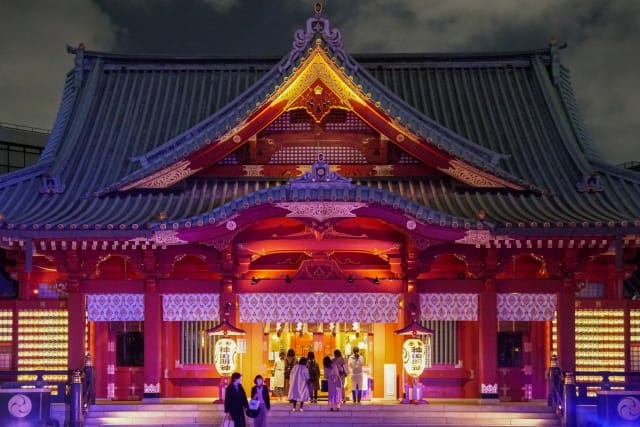
Hatsumode at Kanda Myoujin Shrine is also recommended. Kanda Myoujin Shrine, founded in 730, is famous for its benefits for business prosperity, and not only on the "third day," but also on January 4 and 5, when work begins, many office workers from nearby areas visit and it bustles with activity.
Centered around "Sanganichi," food stalls selling light meals such as takoyaki, okonomiyaki, and chocolate bananas are open until around 10 PM, so you can enjoy Japanese-style street food after worship.
<Information>
- Date: January 1, 2026
- Access: 5-minute walk from Ochanomizu Station on the Sobu Line
- Admission: Free
- Website: https://www.kandamyoujin.or.jp/
Yushima Tenjin Shrine
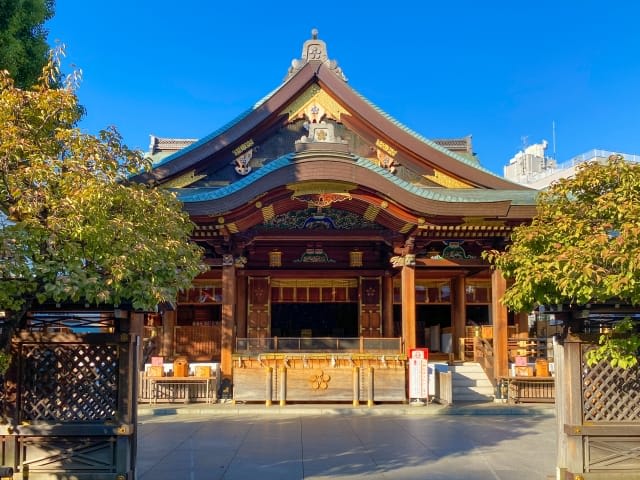
Yushima Tenjin Shrine, which enshrines Sugawara no Michizane, the god of learning, is a popular Hatsumode spot for students preparing for exams. In addition to the main hall, Yushima Tenjin Shrine has plenty of tourist spots, including the "Front Torii" designated as a tangible cultural property and "Kien Hyojin Stone," a power spot for matchmaking, so you can enjoy sightseeing along with Hatsumode.
<Information>
- Date: January 1, 2026
- Access: 2-minute walk from Yushima Station on the Chiyoda Line
- Admission: Free
- Website: https://www.yushimatenjin.or.jp/pc/index.htm
Asakusa Yabusame
Source:TAITO Odekake Navi
Asakusa Yabusame is a traditional event where archers dressed as Kamakura warriors shoot arrows at targets while riding galloping horses. What was once a New Year event at Asakusa Shrine during the Edo period was revived for tourism purposes and is now held at Sumida Park. The sight of shooting targets while riding horses evokes the bravery of warriors and is well worth watching.
On the same day, there is also an event called "grass deer," another traditional event that has continued since the Kamakura period, where participants shoot at deer-shaped targets about 110cm high from about 20m away. Please watch both events together and experience Japanese traditional culture firsthand.
<Information>
- Date: April 2026 (date TBD)
- Access: 8-minute walk from Asakusa Station on the Ginza Line
- Admission: 3,000 yen
- Website: https://www.city.taito.lg.jp/event/kanko/asakusayabusame.html
20th Ebisu
Source:Official Instagram
20th Ebisu is a festival held at Asakusa Shrine to pray for business prosperity and family safety.
At the festival, lucky charms such as bamboo grass "Fukusasa," which brings benefits of business prosperity and family safety, and eight "Kiccho," which bring benefits such as financial luck and victory luck, are sold. It is said that attaching "Kiccho" to "Fukusasa" and displaying it at home or at work will improve various fortunes, so be sure to attach all eight "Kiccho" and grab good fortune!
At the festival, a special goshuin (a stamp received as proof of visiting a shrine or temple) exclusive to 20th Ebisu also appears. Since it's a limited edition goshuin, why not have it written as a souvenir of your trip?
<Information>
- Date: January 20, 2026
- Access: 7-minute walk from Asakusa Station on the Ginza Line
- Admission: Free
- Website: https://www.instagram.com/p/DDy7q8UTygq/ (2025 site)
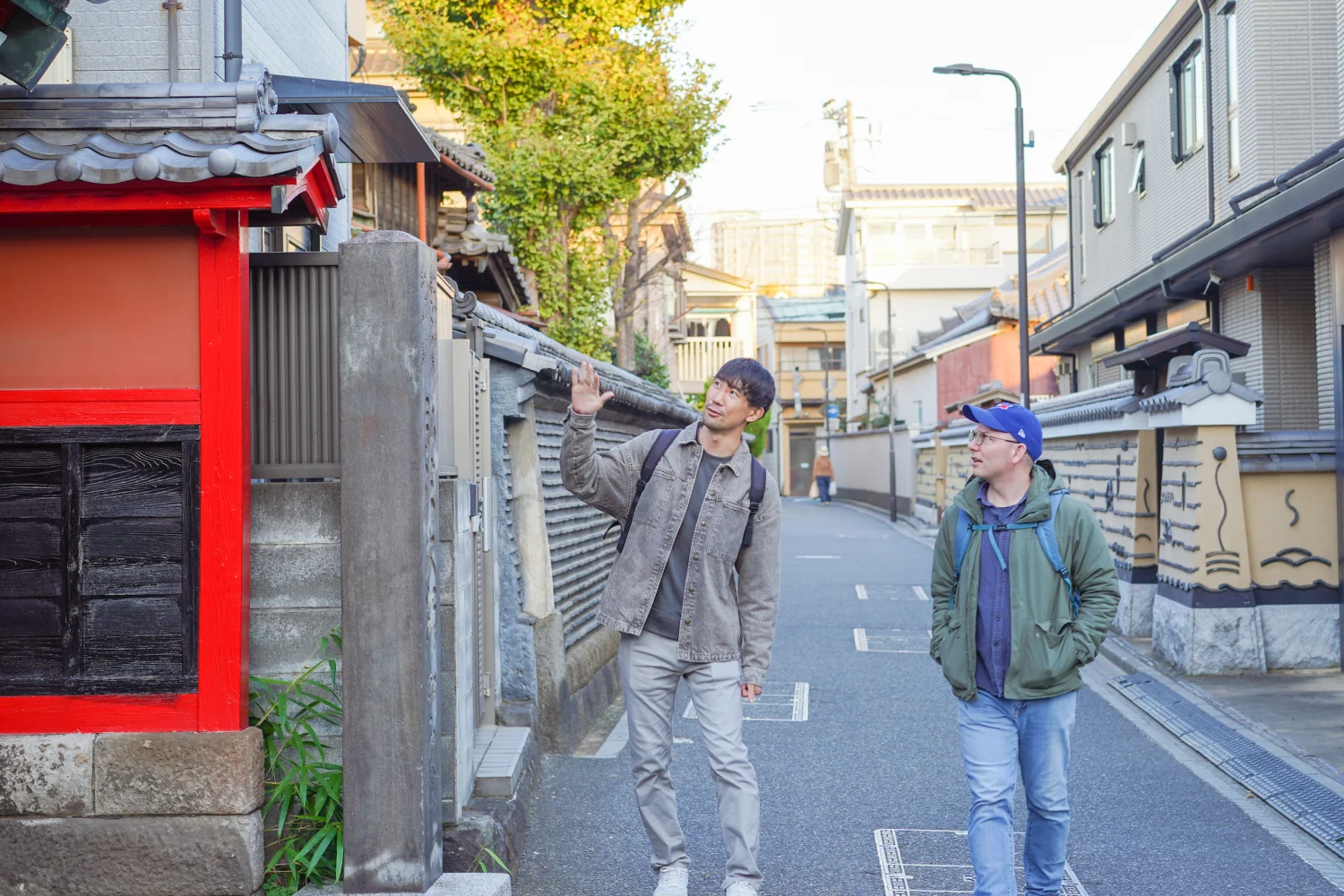
If you're interested in Japanese culture such as Hatsumode, try exploring historical streets with a local guide. If you have a local guide show you around, they can introduce you to historical sites known only to locals that aren't in guidebooks.
I particularly recommend the Yanaka Historical Walking Tour in Tokyo's Old Town, where you can fully enjoy famous spots in Yanaka, where you can feel the good old Tokyo, while strolling from a local's perspective with a guide.
Notable Asakusa Events in February 2026
If you visit Asakusa in February, the Setsubun season is recommended. Setsubun is an event held around February 3, the day before Risshun (the day spring begins on the calendar), where people throw beans to ward off evil spirits and pray for good health throughout the year.
By throwing beans with the chant "Demons out, fortune in," you drive away demons (evil spirits), and by eating as many beans as your age, it is said you will spend the year in good health.
Participate in this Setsubun Asakusa Event, a custom that has continued since ancient times in Japan, and pray for good health throughout the year.
Setsubun-e
Source:TAITO Odekake Navi
Setsubun-e began when it was held on a grand scale at Senso-ji Temple during the Edo period, and is an event to ward off bad luck and pray for happiness throughout the year on the day of Setsubun.
The highlight is when toshiotoko (men who have reached the same zodiac sign as the year they were born) and celebrities vigorously throw beans from a special stage near the main hall. The thrown beans are called "Lucky beans," and eating them is said to have effects of warding off evil and promoting health, so every year it bustles with large crowds seeking "Lucky beans."
This Asakusa Event is inevitably crowded, but why not participate and try to get the precious "Lucky beans"?
<Information>
- Date: February 3, 2026
- Access: 5-minute walk from Asakusa Station on the Ginza Line
- Admission: Free
- Website: https://www.senso-ji.jp/annual_event/05.html
Fukuju-no-Mai (Dance of the Seven Lucky Gods)
Source:TAITO Odekake Navi
Fukuju-no-Mai (Dance of the Seven Lucky Gods) is a dance performed after Senso-ji Temple's Setsubun-e, which began to commemorate the reconstruction of Hozomon Gate in the temple precincts. It is also called "Dance of the Seven Lucky Gods" because it is derived from the story of the Seven Lucky Gods (seven gods who bring happiness).
Fukuju-no-Mai is performed on the special stage where beans are thrown, and you can see people dressed as adorable Seven Lucky Gods dancing. I was fascinated by the unique worldview expressed by the seven gods and watched from beginning to end.
<Information>
- Date: February 3, 2026
- Access: 5-minute walk from Asakusa Station on the Ginza Line
- Admission: Free
- Website: https://www.senso-ji.jp/annual_event/05.html
Hari-Kuyo
Source:Official website
Hari-Kuyo is a traditional event to express gratitude and appreciation for needles that have become unusable due to breaking or rusting, by sticking needles into tofu or konnyaku and offering them at Awashima Daimyojin Shrine. Sticking them into tofu or konnyaku is said to mean that needles that have worked hard piercing hard fabrics should rest in a soft place at the end.
At Sensoji Temple, two pieces of tofu about 60 times the size of normal tofu are prepared, and many people who usually work with needles gather to memorialize the needles.
This is a rare Asakusa Event nationwide, so please visit and see the Hari-Kuyo ceremony.
<Information>
- Date: February 8, 2026
- Access: 5-minute walk from Asakusa Station on the Ginza Line
- Admission: Free
- Website: https://www.senso-ji.jp/annual_event/06.html

In the harsh cold of February, continuous outdoor sightseeing can leave your body chilled to the core. That's why I recommend participating in a food tour where you can enjoy Japanese cuisine. Eating delicious food in a warm room will surely warm both body and soul.
On the Tokyo Night Foodie Tour in Shinjuku, you can enjoy Tokyo's "must-eat" gourmet food, sushi and wagyu beef, in Shinjuku where various restaurants gather. At the sushi restaurant, you can watch the chef make sushi at the counter, and at the yakiniku restaurant, you can enjoy a realistic dining experience by grilling the meat yourself on a stove at your table.
2026 Asakusa Spring Events
March in Asakusa gradually becomes warmer, but it gets cold at night with significant temperature differences between morning and evening. In April, the maximum temperature often rises to nearly 20°C, cherry blossoms begin to bloom, and you can feel the arrival of spring.
From here, we will introduce the spring Asakusa Events in 2026. As outdoor activities become more comfortable, various events are held, from traditional ones to cherry blossom viewing where you can experience nature. Please check each monthly Asakusa Event article for details such as access information.
Notable Asakusa Events in March 2026
In March, traditional Asakusa Events continue to be held at places like Sensoji Temple. As spring approaches, there are also events where you can enjoy drinks and meals while viewing illuminated cherry blossoms in pink, attracting even more tourists than usual.
However, since mornings and evenings are still chilly, it's reassuring to carry a light jacket or cardigan for protection against the cold.
Kinryu Dance
Source: Asakusa Kankou Renmei
Kinryu Dance is a dance created in 1958 to commemorate the reconstruction of Sensoji Temple's main hall, and was named after Sensoji Temple's title "Kinryu-zan."
The highlight is the sight of a golden dragon, 18m long and weighing 88kg, parading through Nakamise and the temple grounds to the accompaniment of Ohayashi (background music played in traditional Japanese performing arts). The dragon is operated by eight people, and its powerful dance as if it were alive is worth watching!
When I first saw the dance, I was overwhelmed by its power. Please participate in this Asakusa Event and watch the dragon's dynamic movements up close.
<Information>
- Date: March 18, 2026
- Access: 5-minute walk from Asakusa Station on the Ginza Line
- Admission: Free
- Website: https://www.senso-ji.jp/annual_event/23.html
Sumida Park Cherry Blossom Festival
Source:TAITO Odekake Navi
At the Sumida Park Cherry Blossom Festival, you can view approximately 500 cherry trees including Somei Yoshino and Oshima Zakura planted in the park.
The highlight is the approximately 1km cherry blossom tree-lined path from Azuma Bridge to Sakura Bridge in the park. From the cherry blossom path, you can enjoy the collaboration with Tokyo Skytree, and at night you can also savor the illuminated night cherry blossoms. The collaboration of the illuminated Skytree and night cherry blossoms is fantastically beautiful, and I lost track of time taking photos.
Yakatabune boats operate on the Sumida River, so enjoying cherry blossom viewing from the boat in a different way is also recommended.
<Information>
- Date: Late March to early April 2026
- Access: 3-minute walk from Asakusa Station on the Ginza Line
- Admission: Free
- Website: https://www.city.taito.lg.jp/event/kanko/sumidasakuramatsuri.html
Honzon Jigen-e Festival
Source:Official website
Honzon Jigen-e Festival is a ceremony celebrating that Kannon, the principal object of worship (the object or person at the center of faith) at Sensoji Temple, appeared on March 18.
The highlights are "douage," where the portable shrine (a vehicle that gods ride in to move during festivals) from Asakusa Shrine is carried to Sensoji Temple's main hall, and "dousage," where it returns from the main hall to Asakusa Shrine. I have seen it, and my eyes were captivated by the magnificent splendor of the portable shrine carried by the bearers.
The ceremony held in a solemn atmosphere is one of the important Asakusa Events symbolizing Asakusa's history and culture. Please participate and experience Asakusa's traditional culture.
<Information>
- Date: March 18-19, 2026
- Access: 7-minute walk from Asakusa Station on the Ginza Line
- Admission: Free
- Website: https://www.asakusajinja.jp/asakusajinja/honzon/index.html
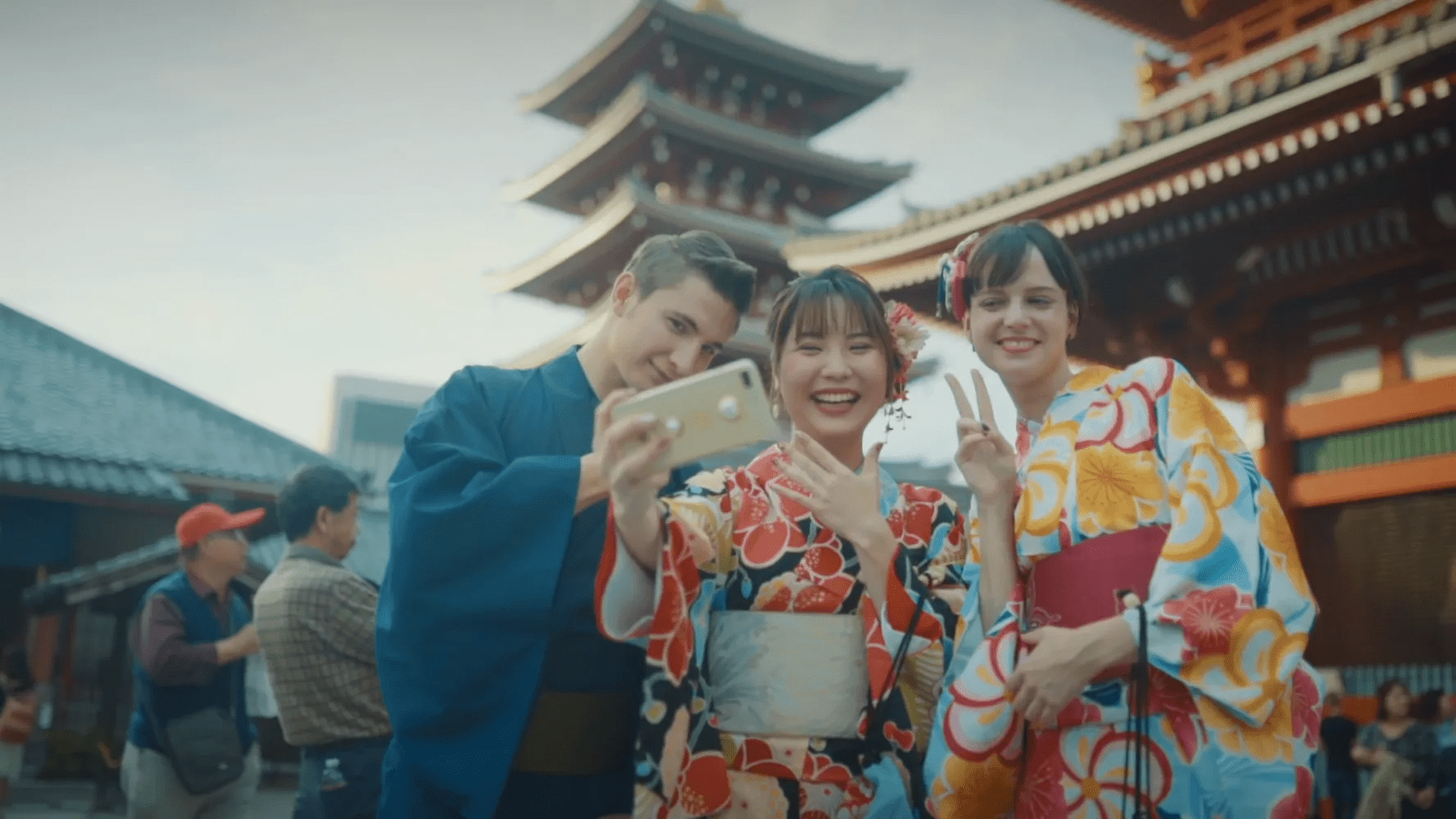
To deeply enjoy Asakusa, have a guide who knows the city and culture inside out show you around. Asakusa has not only the famous Sensoji Temple, but also hidden gems that only locals know, so with a guide, you can be introduced to Asakusa's charms without missing anything.
In the Asakusa Cultural Walk & Matcha Making Tour, you can experience the "real Asakusa" by not only visiting the popular tourist spot Sensoji Temple, but also challenging yourself to make matcha in a tea room and enjoying monjayaki and okonomiyaki lunch at a local restaurant.
During this season, you can enjoy Asakusa sightseeing while viewing cherry blossoms, so please visit and experience Japan's beautiful four seasons.
Notable Asakusa Events in April 2026
In April, cherry blossoms reach full bloom at many spots. The temperature rises sharply from March, and you can enjoy cherry blossom viewing in warm weather. Cherry blossoms fall about one week after passing full bloom, so when the cherry blossoms begin to bloom, please go out for cherry blossom viewing.
In addition to cherry blossoms, you can enjoy Buddha's birthday celebrations and local festivals, so please check them out below.
Bussho-e/Flower Festival
Source:Official website
Bussho-e/Flower Festival is a ceremony celebrating Buddha's birth, where worshippers pour "amacha (sweet tea)" onto the "Infant Buddha statue" placed in the "flower-adorned shrine (a hall decorated with flowers)" with feelings of celebrating the birth.
At this Asakusa Event, you can see kindergarten children pulling a white elephant and walking along the approach in front of the main hall, and you can also taste "amacha" that is distributed free to worshippers. Why not enjoy Sensoji Temple with its gorgeous atmosphere as the temple grounds are decorated with flowers?
<Information>
- Date: April 8, 2026
- Access: 5-minute walk from Asakusa Station on the Ginza Line
- Admission: Free
- Website: https://www.senso-ji.jp/annual_event/09.html
Cherry Blossom Viewing: Sensoji Temple
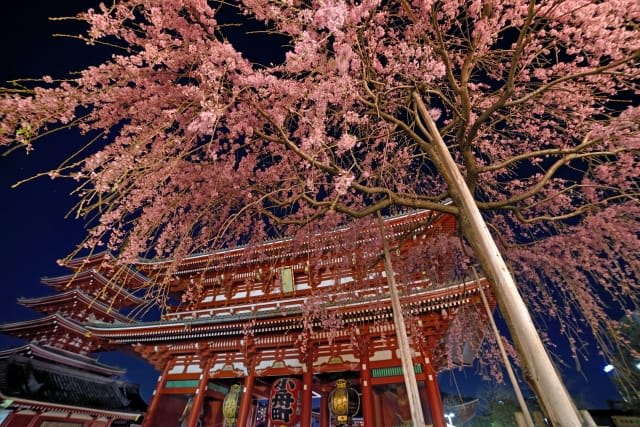
At Sensoji Temple, you can view approximately 50 cherry trees from the temple grounds and Nakamise-dori Street, and the cherry blossoms typically reach their peak from the end of March to the beginning of April.
The highlight is the weeping cherry tree in "Denbō-in Garden," which is open to the public for a limited period during cherry blossom season. From "Denbō-in Garden," you can overlook the five-story pagoda and Skytree, so you can enjoy the spectacular view of history and modernity collaborating with the cherry blossoms.
The wonderful scenery that can only be seen here will surely remain in your memory. Please also capture it in photos.
<Information>
- Date: Early April 2026
- Access: 5-minute walk from Asakusa Station on the Ginza Line
- Admission: Free
- Website: https://www.senso-ji.jp/guide/guide13.html
Cherry Blossom Viewing: Ueno Onshi Park

Ueno Onshi Park is next to Asakusa and is one of Tokyo's leading cherry blossom viewing spots with approximately 800 cherry trees planted, including Somei Yoshino, Yamazakura, and Shidarezakura. My recommended cherry blossom spot is Shinobazu Pond. In addition to seeing the elegant scenery of the pond and cherry blossoms, you can also view the fantastic cherry blossoms reflected on the water surface.
In conjunction with the cherry blossoms blooming, "Ueno Cherry Blossom Festival" and "Ueno Cherry Blossom Festa" are also held, where you can enjoy cherry blossom illuminations, food stalls, and stage shows. While touring Ueno's tourist spots, let's also enjoy the cherry blossoms in gentle pink! Ueno is easily accessible from Asakusa, so it's easy to tour them together.
<Information>
- Date: Early April 2026
- Access: 5-minute walk from Asakusa Station on the Ginza Line
- Admission: Free
- Website: https://www.kensetsu.metro.tokyo.lg.jp/jimusho/toubuk/ueno
Asakusa Kannon-ura Ichiyo Sakura Festival
Source:Official website
Asakusa Kannon-ura Ichiyo Sakura Festival is a festival that started to celebrate the planting of "ichiyō zakura" in Asakusa Kannon-ura, the northern area of Sensoji Temple, to commemorate the 400th anniversary of the opening of Edo.
At this Asakusa Event, you can see Ohayashi and Tsugaru Shamisen (Japanese string instrument) performances by locals, stage shows by local children, and there are also flea markets and stalls, making it enjoyable for everyone from children to adults.
While admiring the beautiful tree-lined path of "ichiyō zakura," please also enjoy the festival by local people.
<Information>
- Date: April 2026 (TBD)
- Access: 12-minute walk from Asakusa Station on the Tsukuba Express Line
- Admission: Free
- Website: https://www.ichiyosakura.com/
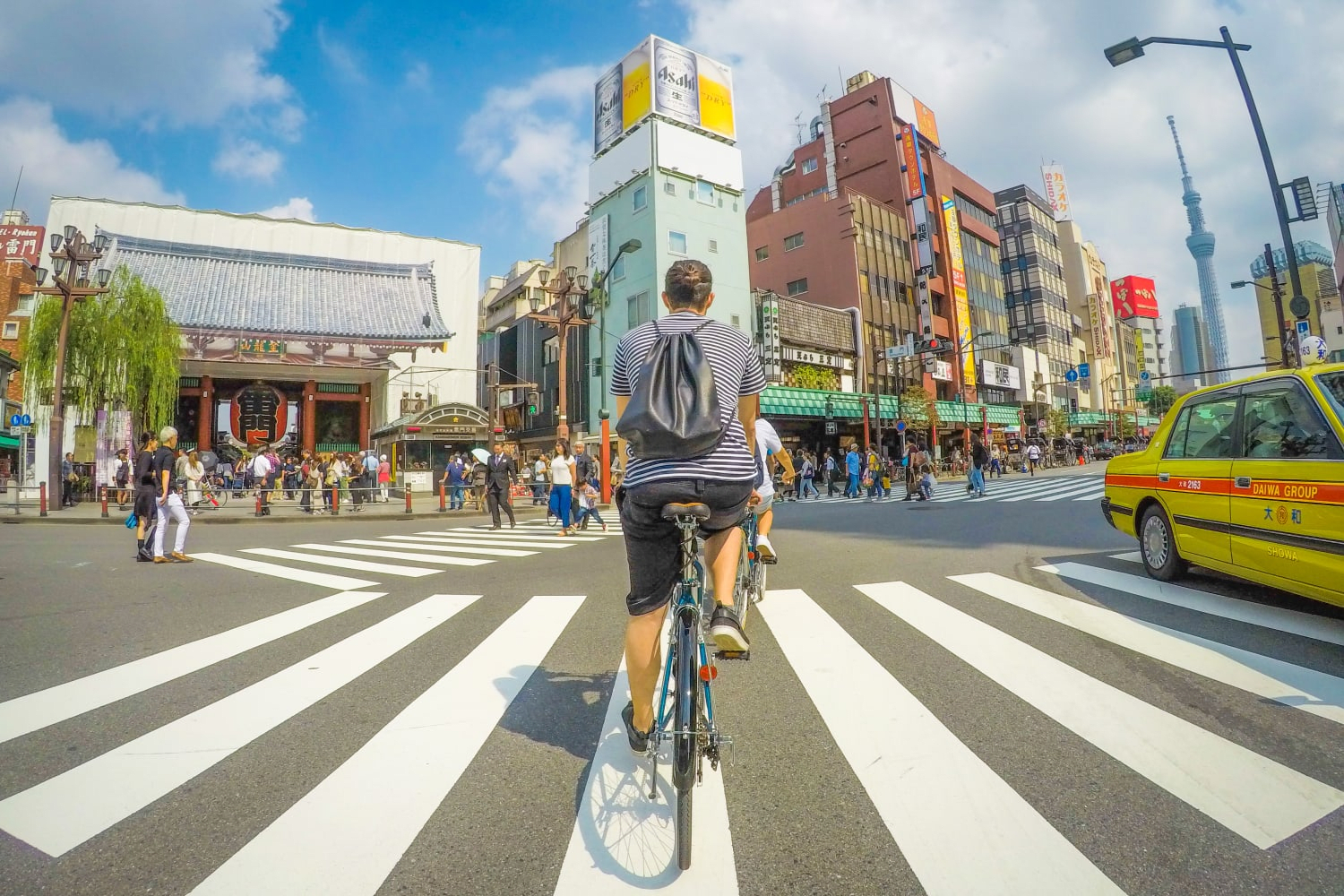
If you want to enjoy beautiful cherry blossoms, participating in a bike tour where you can explore the Asakusa area is also recommended. Hidden cherry blossom spots that you would miss if you used public transportation can be viewed while moving by bicycle.
In the 5-Hour Tokyo & Edo Hidden Gem Bike Tour with Lunch, you can tour the Asakusa, Skytree, Ryogoku, and Fukagawa areas by bike while avoiding crowds. You can explore famous spots in each area from historical sites to modern buildings and tour while comparing life in the Edo period and modern times.
Featured Asakusa Events in May 2026
When it comes to Asakusa events in May, you cannot miss Sanja Matsuri, the annual grand festival of Asakusa Shrine (the most important and grandest festival held at a shrine throughout the year). Every year, not only Japanese people but also many foreign tourists visit to witness this historic festival.
If you are visiting Asakusa in May, this is a festival worth adjusting your other plans to attend.
Sanja Matsuri
Source:Official website
Sanja Matsuri is a festival that began with the purpose of enshrining the Hinokuma brothers and Hajino nakamachi, who are referred to as Sanja and were involved in the founding of Asakusa Shrine. You can see 44 portable shrines (mikoshi) from the town neighborhoods, and on the final day, three main mikoshi parade through the streets of Asakusa.
The highlight is the climax when the main mikoshi go around the town and return to the shrine grounds. It is said that the more vigorously the mikoshi are carried, the higher the divine spiritual power becomes, and you can witness the powerful sight of them being violently swayed by the carriers.
My recommended viewing spot is the torii gate in front of the main hall. Combined with the powerful chants by the carriers, I was overwhelmed by the excitement of the venue.
At this Asakusa event, you can enjoy not only the mikoshi but also dances, taiko drum performances, and food stalls. Since the festival is held for three days, if you're unsure, visit on the final day when the excitement reaches its peak!
<Information>
- Schedule: May 15-17, 2026
- Access: 7-minute walk from Asakusa Station on the Ginza Line
- Admission: Free
- Website: https://www.asakusajinja.jp/sanjamatsuri/about/
Asakusabashi Red-&-White Marronnier Festival
Source:Official website
The Asakusabashi Red-&-White Marronnier Festival is an event aimed at regional exchange and revitalization, held when the red and white marronnier flowers planted along the roads around Asakusabashi bloom.
Around the venue at Hulic Asakusabashi Building, you can watch the "Nigiwai Parade" featuring Awa Odori (a traditional dance from Tokushima Prefecture) and other performances. You can also play games such as super ball scooping and yo-yo fishing, and enjoy shopping at the "Nigiwai Market" where you can purchase specialty products from the Asakusa area.
With so many attractive programs, you can fully enjoy playing for an entire day.
<Information>
- Schedule: May 2026 (date to be determined)
- Access: 1-minute walk from Asakusabashi Station on the Sobu Line
- Admission: Free
- Website: https://marronnier-matsuri.com/ (2025 site)
Dance of Treasures
Source:365 Asakusa
The Dance of Treasures is an Asakusa event that began with the purpose of expressing gratitude to Kannon and wishing for children's growth. On May 5th, Children's Day (a day to celebrate and wish for children's growth), kindergarten children from Sensoji Temple walk through the town pulling a treasure ship carrying the Seven Lucky Gods.
It is impressive that the children wear costumes inspired by the Hinokuma brothers, fishermen who were the founders of Sensoji Temple.
The sight of the children pulling the treasure ship without rest from Asakusa Public Hall, through Kaminarimon and Nakamise, to the main hall of Sensoji Temple gives energy to the audience. I also received energy from watching the children working hard.
If you have children, watch together with your child and pray for your own child's growth.
<Information>
- Schedule: May 5, 2026
- Access: 5-minute walk from Asakusa Station on the Ginza Line
- Admission: Free
- Website: https://www.city.taito.lg.jp/event/kanko/takara-no-mai.html
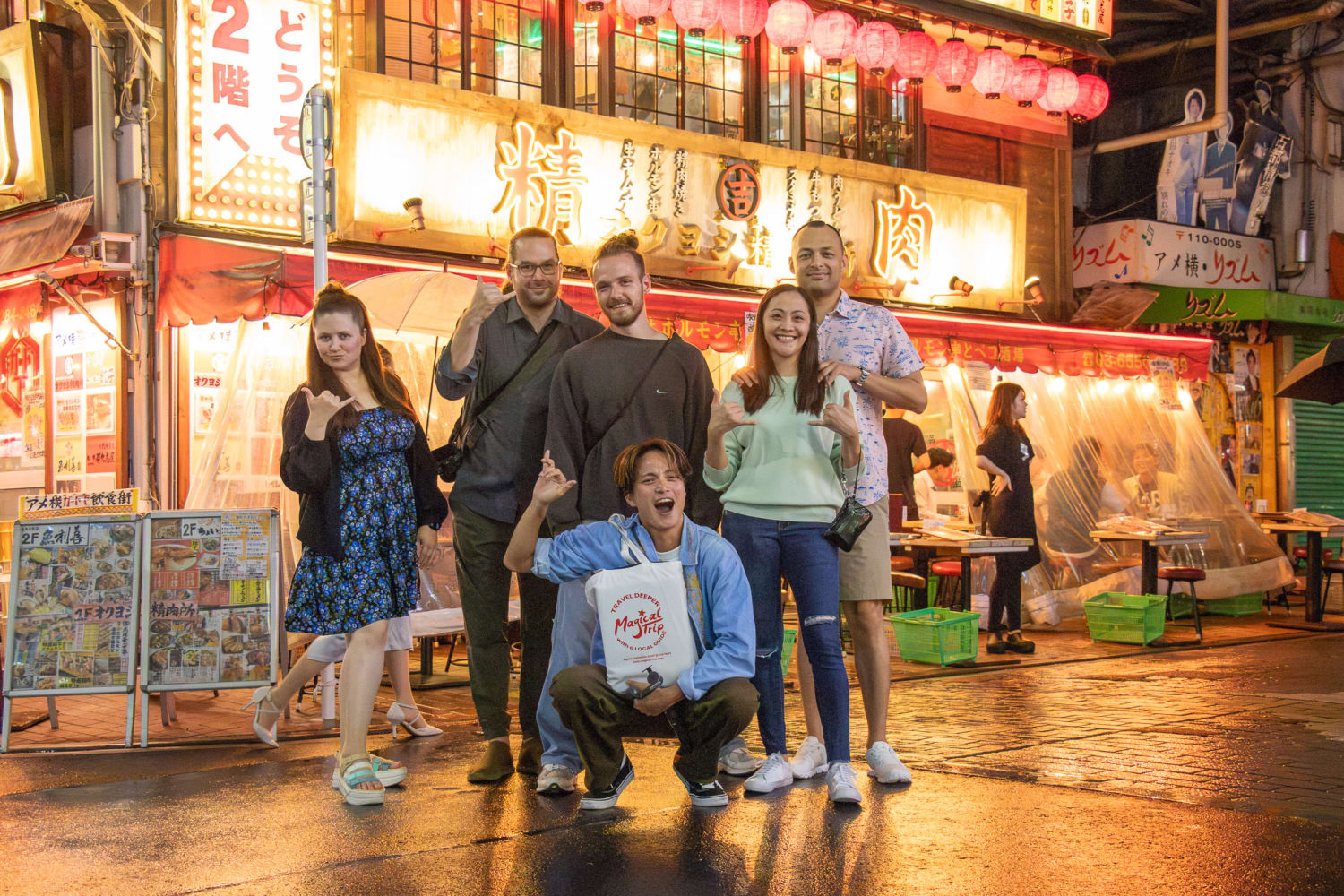
In May, Tokyo becomes warmer and it becomes easier to go out at night. Ueno has many restaurants where you can casually enjoy drinks, so why not try bar hopping?
The All-You-Can-Drink Bar Hopping Tour in Ueno allows you to experience food stall cuisine at stalls bustling with locals in Ueno and 45 minutes of all-you-can-drink beverages. To finish the tour, try "shime ramen," one of Japan's drinking party cultures. After drinking alcohol, the rich-flavored ramen will permeate your slightly hungry body, surely satisfying both body and mind.
Summer Asakusa Events in 2026
Summer in Asakusa is characterized by the rainy season (tsuyu, a period of continuous rainy and cloudy days) in June with poor weather, but it suddenly becomes hot once the rainy season ends. Especially in July and August, the maximum temperature exceeds 30 degrees Celsius, but at night the temperature drops and you can spend time comfortably.
Another attractive point of Japanese summer is that you can wear yukata (a summer kimono without lining, made of cotton and other materials). There are many shops where you can rent yukata at tourist spots, so please try wearing yukata or take commemorative photos in yukata.
From here, I will introduce summer Asakusa events in 2026. There are many events held on comfortable nights, including fireworks and bon odori. Please check each month's event article for details such as access.
Featured Asakusa Events in June 2026
Although there are no major Asakusa events in June, let's pay attention to food events held in the nearby area of Ueno that signal the beginning of summer. Eating outdoors while feeling the pleasant breeze is the best!
Oku-Asakusa Bon-Odori Festival
Source:365 Asakusa
The Oku-Asakusa Bon-Odori Festival is a festival held at Sanyabori Open Space in Sumida Park with Tokyo Skytree as a backdrop.
At this festival, you can enjoy various content including bon odori (dancing in a circle to honor ancestral spirits), which can be said to be a hallmark of Japanese summer, food stalls, taiko drum performances, and more. Due to the nature of Asakusa as a location, it is characterized by participation from not only locals but also many foreign tourists. The bon odori, which is open to anyone, has an atmosphere that makes it easy to challenge even for first-timers, so you can casually enjoy dancing while imitating the dancers!
Why not stop by while sightseeing and experience Japanese traditional culture while gazing at the modern Tokyo Skytree?
<Information>
- Schedule: June 2026 (date to be determined)
- Access: 3-minute walk from Asakusa Station on the Ginza Line
- Admission: Free
- Website: https://x.com/okuasakusa_bon (2025 site)
Ofuji-san Plant Fair
Source:TAITO Odekake Navi
The Ofuji-san Plant Fair is a large-scale plant market in Tokyo held in conjunction with the ennichi (a special day associated with the shrine) of Sengen Shrine (commonly known as Ofuji-san). This historic event has continued for about 400 years and is held on the roads around the shrine for four days on the last Saturday and Sunday of May and June.
On the roads, various plants such as garden trees, bonsai, succulents, and flowers are lined up closely, and just looking at them is enjoyable. At night, the lanterns hanging across the street are lit, and you can also experience a fantastical atmosphere.
When bringing plants from Japan on international flights, export and import inspection certificates are required. However, depending on the type and condition, they may not be allowed, so caution is necessary.
<Information>
- Schedule: June 2026 (date to be determined)
- Access: 13-minute walk from Asakusa Station on the Tsukuba Express Line
- Admission: Free
- Website: https://www.city.taito.lg.jp/event/kanko/ohujisannouekiichi.html
Ueno de Food Fest
Source:Official website
Ueno de Food Fest is an event held at Ueno Park where you can fully enjoy food and entertainment.
When I participated, the content allowed for international exchange with the themes of "food," "play," and "learning," where you could taste local gourmet food from Ueno shopping streets, cuisine from around Japan, and Korean dishes.
You could also enjoy stage shows such as K-POP and enka, as well as stamp rallies. A diverse mix of Japanese-Korean programs was prepared, and even I, who don't know much about Korea, could get excited!
This is a popular event where you can feel like you're traveling to Korea while in Japan. Why not enjoy shows and stamp rallies while eating your way through Japanese and Korean gourmet food?
<Information>
- Schedule: June 2026 (date to be determined)
- Access: 2-minute walk from Ueno Station on the Yamanote Line
- Admission: Free
- Website: https://uenode.com/
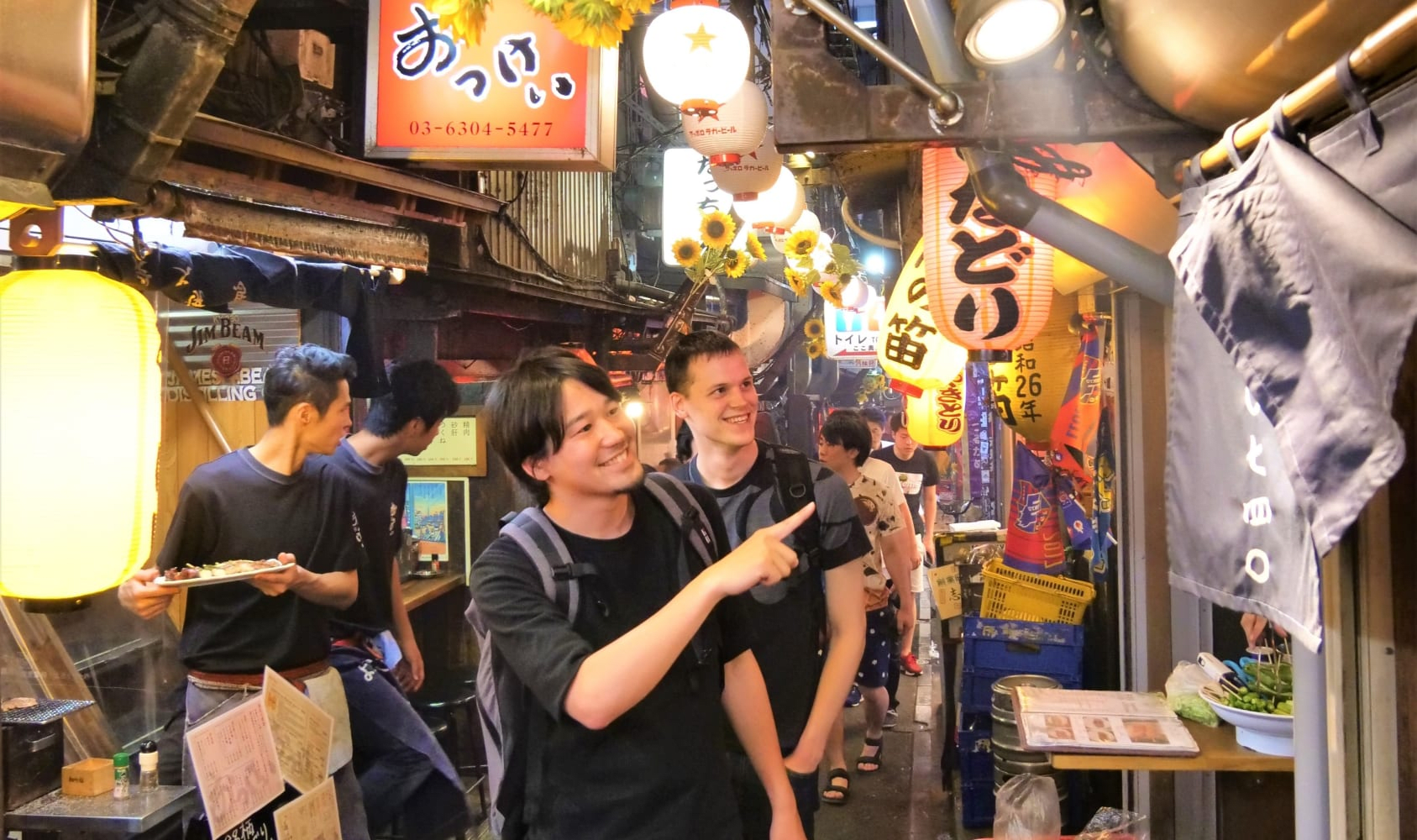
If you want to deeply enjoy Tokyo, it is recommended to have a local guide who knows everything about the city show you around. Among the tours guided by local guides, Magical Trip tours are popular with foreign tourists visiting Japan because they can enjoy experiential tours at popular tourist spots, and they have a reputation for providing highly satisfying experiences.
The Tokyo Bar Hopping Night Tour in Shinjuku is a notable tour that won TripAdvisor's Best of the Best for two consecutive years in 2024 & 2025, where you can enjoy bar hopping in Shinjuku, one of Tokyo's leading entertainment districts.
Noteworthy Asakusa Events in July 2026
July in Asakusa is the height of summer, characterized by many Asakusa Events that allow you to fully enjoy summer, such as fireworks and summer festivals. The Sumida River Fireworks Festival is one of Tokyo's most exciting festivals, with many people visiting the venue area every year.
Traditional Asakusa Events that have continued since ancient times are held at shrines and temples, and they are renowned for allowing visitors to experience the good old Japanese summer. Since some events are held from the evening, it's also recommended to enjoy sightseeing in Asakusa during the day and enjoy events at night, fully experiencing Asakusa throughout the day.
Sumida River Fireworks Festival

The Sumida River Fireworks Festival is one of Japan's largest fireworks displays, with approximately 20,000 fireworks launched from two venues along the Sumida River on the last Saturday of July. It originated in 1733 when fireworks were launched under the name "Ryōgoku River Opening Festival" with the purpose of driving away famine and plague.
The highlight of this Asakusa Event is the fireworks competition where top-class fireworks artisans from across Japan compete with their displays. The fireworks created by 10 fireworks companies selected from fireworks festivals nationwide are like works of art, breathtakingly beautiful.
At the fireworks festival, various fireworks are launched one after another, from traditional ones to playful ones like Pikachu, so I forgot to even talk with the friend I visited with and became completely absorbed in the fireworks from start to finish.
While the fireworks can be viewed for free from areas around the venue, it is inevitably crowded, so we recommend watching comfortably from the paid areas.
<Information>
- Date: July 25, 2026
- Access: 15-minute walk from Asakusa Station on the Ginza Line
- Admission: Free (paid seating available)
- Website: https://www.sumidagawa-hanabi.com/ (2025 site)
46,000-Day Festival & Ground-Cherry Market
Source:Official website
The 46,000-Day Festival & Ground-Cherry Market is a market held at Senso-ji Temple on July 10, when it is believed that visiting Kannon brings the same merit as 46,000 days of worship. In Japan, there is a legend that "drinking ground cherry is effective against illness," and because ground cherry shops prospered, the market came to be held on the special day of July 10.
At this traditional Asakusa Event, approximately 100 ground cherry shops line up, selling various types of ground cherries, including those with wind chimes (traditional Japanese crafts that make sounds when the wind blows) and branch ground cherries. Please enjoy the scenery of burning bright red ground cherries gorgeously decorating the temple grounds.
The "Lightning Protection Charm" is specially sold only during the two days of the Ground-Cherry Market, so why not purchase one as a souvenir of your trip?
<Information>
- Dates: July 9-10, 2026
- Access: 5-minute walk from Asakusa Station on the Ginza Line
- Admission: Free
- Website: https://www.senso-ji.jp/annual_event/13.html
Shitamachi Tanabata Festival
Source:TAITO Odekake Navi
The Shitamachi Tanabata Festival is a festival related to Tanabata held on "Kappabashi Hon-dori Street" that connects Asakusa and Ueno. Tanabata originates from Chinese mythology and refers to the night of July 7 when the separated Orihime and Hikoboshi can meet, and it is said that wishes come true if you write them on paper strips and display them.
At this Asakusa Event, in addition to viewing the Tanabata decorations displayed on the street, you can also enjoy food from local shopping districts, parades by multiple groups, and street performances. Bamboo branches for displaying paper strips are placed throughout the venue, so try writing your wishes on paper strips and displaying them!
The street colorfully decorated with Tanabata ornaments has a brilliance different from usual. Please visit and experience the atmosphere of Tanabata.
<Information>
- Date: July 2026, to be determined
- Access: 5-minute walk from Ueno Station on the Yamanote Line
- Admission: Free
- Website: https://www.city.taito.lg.jp/event/kanko/shitamathitanabata.html
Summer Pilgrimage at Asakusa Shrine
Source:Official website
Summer Pilgrimage at Asakusa Shrine is a custom of visiting a shrine to give thanks for the safety of the half year since the beginning of the year and to pray for peaceful passage through the remaining half year until year's end. At the shrine grounds for this special Asakusa Event, in addition to selling Summer Pilgrimage limited edition goshuin (stamps received as proof of visiting a shrine or temple), you can enjoy various contents including watching Bon dance, experiencing painting wind chimes, and yukata dressing and hair styling.
In conjunction with the Summer Pilgrimage at Asakusa Shrine, I also participated in the "Summer Food and Summer Bar Hopping" stamp rally held at shops around the Asakusa Kannon back area. In the stamp rally, you receive a stamp when you order the "1,000 yen set" where you can enjoy a meal and one drink at participating stores, and when you collect five stamps, you can exchange them for prizes. Why not enjoy the stamp rally while savoring summer-appropriate meals and delicious drinks?
<Information>
- Dates: July 1-7, 2026
- Access: 5-minute walk from Asakusa Station on the Ginza Line
- Admission: Free
- Website: https://natsumoude.jp/
Ueno Summer Festival
Source:TAITO Odekake Navi
The Ueno Summer Festival is an event where you can enjoy a variety of attractions for four weeks around Shinobazu Pond in Ueno Onshi Park, which is easily accessible from Asakusa. At the venue, you can play shooting games and goldfish scooping, as well as enjoy watching stage shows, participating in stamp rallies, and shopping at the antique market.
The "Wind-Chime Corridor," which I recommend at this Asakusa Event, is renowned for allowing visitors to enjoy an elegant atmosphere with approximately 3,000 wind chimes displayed on the Lotus-Viewing Deck by the pond.
Not only is the visual coolness of the wind chimes appealing, but when the wind blows, you can hear their light tones and experience a refreshing summer feeling. Capture the scenery that is sure to be photogenic and share it with friends and family on social media.
<Information>
- Dates: 4 weeks starting from a to-be-determined date in July 2026
- Access: 5-minute walk from Ueno Station on the Ginza Line
- Admission: Free
- Website: None (2025 site has been deleted)

On summer nights, why not enjoy night cruising along the Sumida River with guidance from a local guide? The Tokyo night view seen while feeling the pleasant sway of the waves creates an extraordinary feeling and is sure to free you from your hectic daily life.
With Tokyo Private Night Cruise from Asakusa: Stunning City Lights & Skyline Views, after touring famous Asakusa spots, you can board a cruise ship operating on the Sumida River and enjoy the sparkling night views of Tokyo Tower, Rainbow Bridge, and more.
Noteworthy Asakusa Events in August 2026
August in Asakusa is characterized by many traditional Asakusa Events related to "Obon," a period for honoring the spirits of ancestors. Following Japanese tradition, try expressing gratitude to your ancestors through these events.
However, what I look forward to every year is the "Samba Carnival," which has uniquely evolved by incorporating foreign culture. The sight of women dressed in gorgeous costumes dancing powerfully to lively rhythms is a must-see!
Asakusa Samba Carnival
Source:Official website
The Asakusa Samba Carnival is said to be the largest samba carnival in the Northern Hemisphere, which began in 1981, where you can see up close the powerful samba of groups modeling themselves after authentic Rio. The parade, which doubles as a contest led by Asakusa's shopping districts, is a major event that attracts about 500,000 spectators every year.
What you want to pay attention to at this exciting Asakusa Event is being able to see energetic samba dancing alongside Asakusa's old townscape and Tokyo Skytree. The original Japanese samba carnival, where Brazilian culture and Japanese traditional culture blend together, is a must-see.
In conjunction with the carnival, a "Brazilian Products Fair" is also held at Senso-ji Temple, so please be sure to stop by.
<Information>
- Date: August 2026, to be determined
- Access: Immediate walk from Asakusa Station on the Ginza Line
- Admission: Free
- Website: https://www.asakusa-samba.org/
Sumida River Lantern Festival
Source:365 Asakusa
The Sumida River Lantern Festival is an Asakusa Event where toro (traditional East Asian lighting tools) are floated to mourn the spirits of people who died in the Sumida River during events such as the Great Kanto Earthquake and the Tokyo Air Raids.
What you want to pay attention to is being able to purchase a lantern, write a message on it, and float it in the river. The experience of floating lanterns imbued with feelings for peace is not easily available, so please give it a try.
Additionally, cruise ships and yakatabune (traditional houseboat) are also operated in conjunction with the event, so viewing the lanterns up close from aboard a ship is also recommended. The sight of approximately 3,000 lanterns floating on the Sumida River is fantastical and is sure to become an unforgettable memory.
<Information>
- Date: August 2026, to be determined
- Access: 5-minute walk from Asakusa Station on the Ginza Line
- Admission: Free
- Website: https://e-asakusa.jp/culture-experience/105386 (2025 site)
Sumida River Dance Festival
Source:Sumida Keizai Shimbun
The Sumida River Dance Festival is a summer festival held at Uruoi Square in front of Sumida Ward Office where both locals and tourists can enjoy together. At this lively Asakusa Event, in addition to open-participation Bon dance, you can see various stage programs such as performances by local groups, Eisa dance (a dance originating from Okinawa), and Yosakoi dance (a dance originating from Kochi).
There are also plenty of food trucks and food booths, so being able to enjoy the festival while eating and walking around is also an attractive point.
Since it's easily accessible from Asakusa Station, why not participate while sightseeing in Asakusa and fully enjoy the local atmosphere?
<Information>
- Date: August 2026, to be determined
- Access: 5-minute walk from Asakusa Station on the Ginza Line
- Admission: Free
- Website: https://visit-sumida.jp/event/sumidagawaodorifesta2025/ (2025 site)
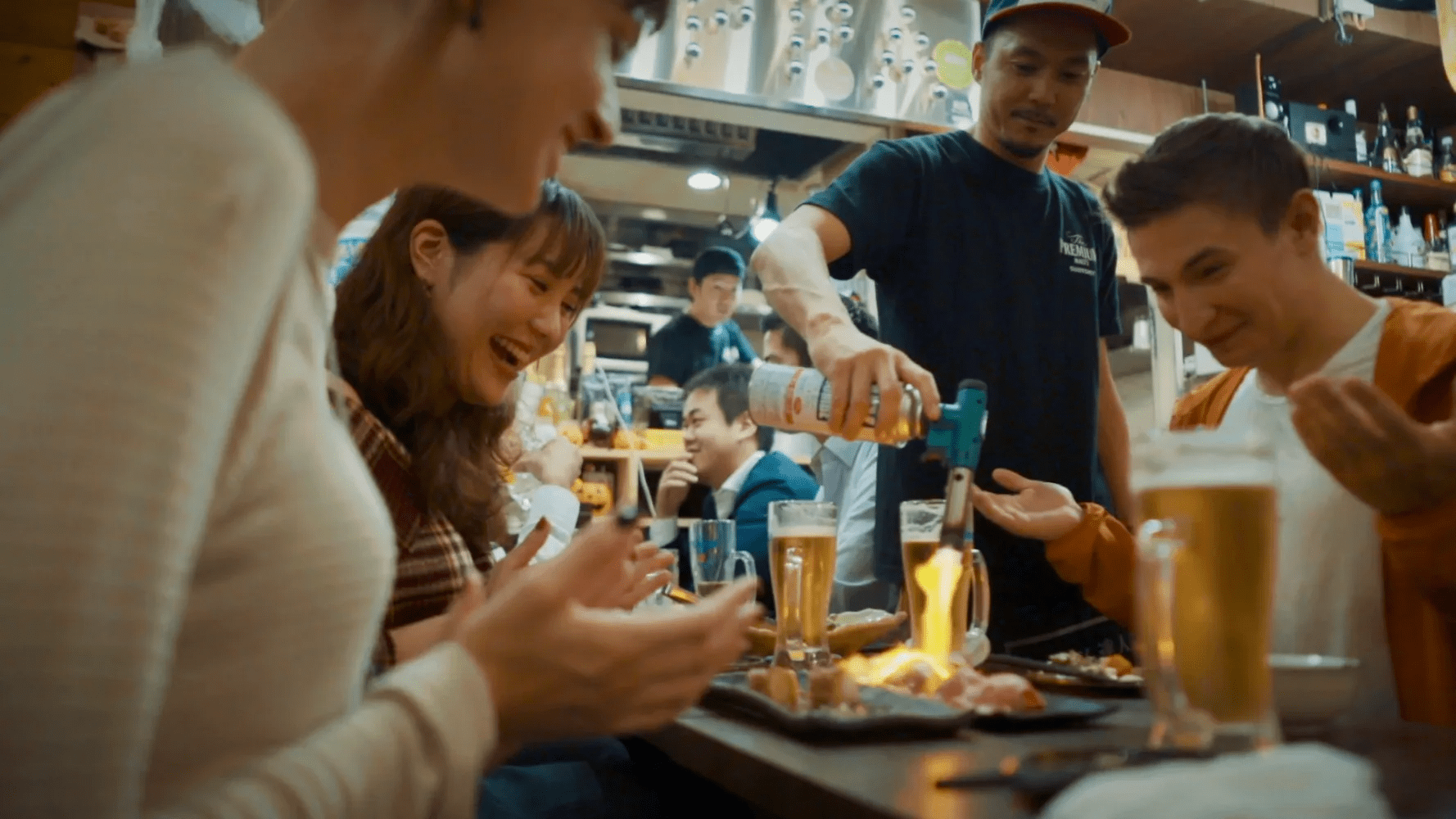
On hot Japanese summer days, it is recommended to enjoy bar hopping on cool nights. When the sun sets, the streets of Tokyo cool down, making it perfect for bar hopping while strolling around the city!
Shibuya Bar Hopping Night Tour in Tokyo allows you to enjoy various meat dishes at street food stalls and meat specialty restaurants popular with locals in Shibuya, known as a trendsetting area. Enjoy exquisite Japanese food in the heart of Tokyo where youth culture thrives!
Autumn Asakusa Events in 2026 (September to November)
Autumn in Asakusa features comfortable weather that is neither too hot nor too cold, allowing visitors to enjoy various activities such as "shokuyoku no aki" (the season when food becomes more delicious and appetites increase) and "geijutsu no aki" (the season when the pleasant climate provides leisure to enjoy art).
As November arrives, temperatures drop further and the autumn foliage season begins, allowing you to enjoy the seasonal scenery as leaves turn yellow and red.
From here, we will introduce the autumn Asakusa Events in 2026. Many historical events are held, so you can experience Japanese traditional culture up close. Please check each month's event article for details such as access information.
Notable Asakusa Events in September 2026
September in Asakusa is characterized by many Asakusa Events that evoke the end of summer and the beginning of autumn. You can enjoy summer festivals more comfortably than in the harsh heat of August, so you can participate casually without worrying too much about the heat.
There are also many local-style events, offering a chance to see authentic Tokyo! Please actively participate in these Asakusa Events in addition to sightseeing in Asakusa.
Kaminarimon Bon Odori
Source:Official website
At the Kaminarimon Bon Odori Festival, you can enjoy bon odori dancing in front of Kaminarimon, a symbol of Asakusa. During the bon odori, seven songs are played, ranging from the traditional "Tōkyō Ondō" to the original "Tokyo Skytree Ondo." Since videos showing how to dance are posted on the official website, you can enjoy the bon odori even more if you practice in advance.
In addition to the main bon odori, pay attention to the "painted lanterns" that arrive from Akita Prefecture. They are lit around 5:00 PM when the sun sets, and 20 large lanterns decorated with paintings of beautiful women in kimono add color and glamour to the festival.
During the day, enjoy the lively Asakusa Event with food at stalls and bon odori, and at night, savor the atmospheric ambiance created by the "painted lanterns."
<Information>
- Date: To be determined in September 2026
- Access: 1-minute walk from Asakusa Station on the Ginza Line
- Admission: Free
- Website: https://www.kaminari-bonodori.com/ (2025 site)
Asakusa Lantern Festival
Source:Official website
The Asakusa Lantern Festival is an Asakusa Event where approximately 500 lanterns and andon (traditional Japanese lighting devices made of wooden frames covered with Japanese paper, with an oil dish inside that is lit) are displayed at Asakusa Shrine, Hanayashiki Street, Kaminarimon Yanagi Koji, and other locations, allowing visitors to enjoy a mystical corridor of light after sunset.
The lanterns are decorated with designs and messages created by local residents, illustrators, manga artists, and others, making them uniquely diverse. If you look closely, there are so many that you cannot see them all in one day. There are also many works created by professionals, making them well worth viewing!
A photo contest is also held on Instagram, so why not find your favorite and post it?
<Information>
- Date: To be determined in September 2026
- Access: Around Asakusa Station on the Ginza Line
- Admission: Free
- Website: http://asakusatourousai.tokyo/ (2025 site)
Asakusa Kokusai Street Beat Festival
Source:Official website
The Asakusa Kokusai Street Beat Festival is an Asakusa Event where you can enjoy stage shows and other entertainment, centered around an Eisa parade held on Asakusa Kokusai Street. The Eisa parade includes not only adults but also elementary school children, where you can see the rhythmic sound of drums and the energetic, childlike dancing.
The event also holds a lottery where you can receive lottery tickets by using participating stores, and if you win, you can receive gift certificates that can be used in the shopping district or original eco bags. Enjoy shopping in the shopping district while watching the Eisa dancing.
<Information>
- Date: To be determined in September 2026
- Access: 3-minute walk from Asakusa Station on the Tsukuba Express Line
- Admission: Free
- Website: https://asakusa-kokusaidori.jp/news/news-2124/ (2025 site)
Ushijima Shrine Festival
Source:Sumida Tourism Association
The Ushijima Shrine Festival is an Asakusa Event with over 1,000 years of history held at Ushijima Shrine and the surrounding area. At the festival, you can watch not only adults but also children carrying mikoshi (portable shrines), parade of dashi (decorated mobile floats), taiko drum performances, and more.
The highlight is the "Hōren Shinkō Festival" held during the grand festival that takes place once every five years, where a black bull pulls a cart carrying a mikoshi called "phoenix-palanquin" while walking through the surrounding area. Watching this ancient custom makes you feel as if you have traveled back in time.
2026 is not a grand festival year, but if you have the opportunity to visit a grand festival, be sure to take a photo of the bull collaborating with Tokyo Skytree.
<Information>
- Date: To be determined in September 2026
- Access: 10-minute walk from Asakusa Station on the Ginza Line
- Admission: Free
- Website: None

If you want to deeply enjoy Asakusa, we recommend sightseeing while listening to explanations from a local guide. A guide who knows the area well can teach you trivia about popular tourist attractions that are not in guidebooks, guide you to hidden gems, and allow you to fully enjoy the charm of Asakusa.
The Asakusa Cultural Walk & Matcha Making Tour allows you to tour Asakusa's tourist spots, then try your hand at the traditional Japanese culture of tea ceremony, and taste monjayaki and okonomiyaki at shops popular with locals in the back alleys of Asakusa.
Notable Asakusa Events in October 2026
October in Asakusa is characterized by many outdoor Asakusa Events, as temperatures drop and it becomes comfortable to walk outside. Since you can enjoy events in the cool climate, it is crowded with many tourists!
There are events where you can not only watch traditional dances from Japan and abroad but also participate and enjoy dancing, so please check them out below.
Chrysanthemum Memorial Service
Source:Official website
The Chrysanthemum Memorial Service is a traditional event held at Sensoji Temple where worshipers exchange chrysanthemum flowers they brought with chrysanthemum flowers that have received kaji kito (a ritual to remove illness and disasters). It is said that if you air-dry the exchanged chrysanthemum flowers, place them under your pillow, and sleep, your headache will disappear and disasters will be removed.
On the same day, you can specially purchase a "chrysanthemum amulet" that brings blessings of longevity and long life, and you can also see the powerful "Dance of the Golden Dragon."
The chrysanthemum flowers to bring can be purchased on the temple grounds, so you can participate casually.
<Information>
- Date: October 18, 2026
- Access: 5-minute walk from Asakusa Station on the Ginza Line
- Admission: Free
- Website: https://www.senso-ji.jp/annual_event/16.html
Dance of the Golden Dragon
Source:TAITO Odekake Navi
The "Dance of the Golden Dragon," which can be seen at the "Honzon Jigen-e" Asakusa Event held at Sensoji Temple in March, is also performed in November. The sight of the golden dragon twisting its large body as it dances is full of power!
You can actually touch the Golden Dragon, and it is said that touching the head three times brings blessings of good fortune and longevity. If it is difficult to touch during the performance, why not touch it with a wish after the performance ends?
<Information>
- Date: October 18, 2026
- Access: 5-minute walk from Asakusa Station on the Ginza Line
- Admission: Free
- Website: https://www.senso-ji.jp/annual_event/23.html
Sumiyume Dance Parade
Source:Official website
The Sumiyume Dance Parade is an Asakusa Event where you can casually enjoy bon odori at Sumida Park, devised based on "The Dancing Procession" by Katsushika Hokusai, a world-famous ukiyo-e artist (a person who drew customs and social conditions popular during the Edo period).
The attractive point of bon odori is that you can dance to various songs, from traditional bon odori ondo and folk songs to original songs, with professional live performances.
In addition to bon odori, there are also performances and workshops by local groups and other projects that liven up the venue. The atmosphere is friendly, so it is easy to participate even alone.
<Information>
- Date: To be determined in October 2026
- Access: 5-minute walk from Asakusa Station on the Ginza Line
- Admission: Free
- Website: https://sumiyume.jp/event-page/odori2025/ (2025 site)
Caribbean & Latin America Street at Sumida Jazz
Source:PR TIMES
Caribbean & Latin America Street at Sumida Jazz is an Asakusa Event held with the purpose of deepening international exchange through Caribbean and Latin American culture. With the theme of "eat, drink, sing, and dance," you can enjoy Latin American music, food and drinks, and shopping for miscellaneous goods at Sumida Park.
Sumida Park is known as a viewing spot where you can see Tokyo Skytree up close, and the attractive point is that you can experience different cultures while viewing Tokyo Skytree. The content can be enjoyed by people of all ages, so even those with children can participate casually.
<Information>
- Date: To be determined in October 2026
- Access: 10-minute walk from Asakusa Station on the Ginza Line
- Admission: Free
- Website: https://wsavannast.com/events/the-caribbean-latin-america-street/ (2025 site)
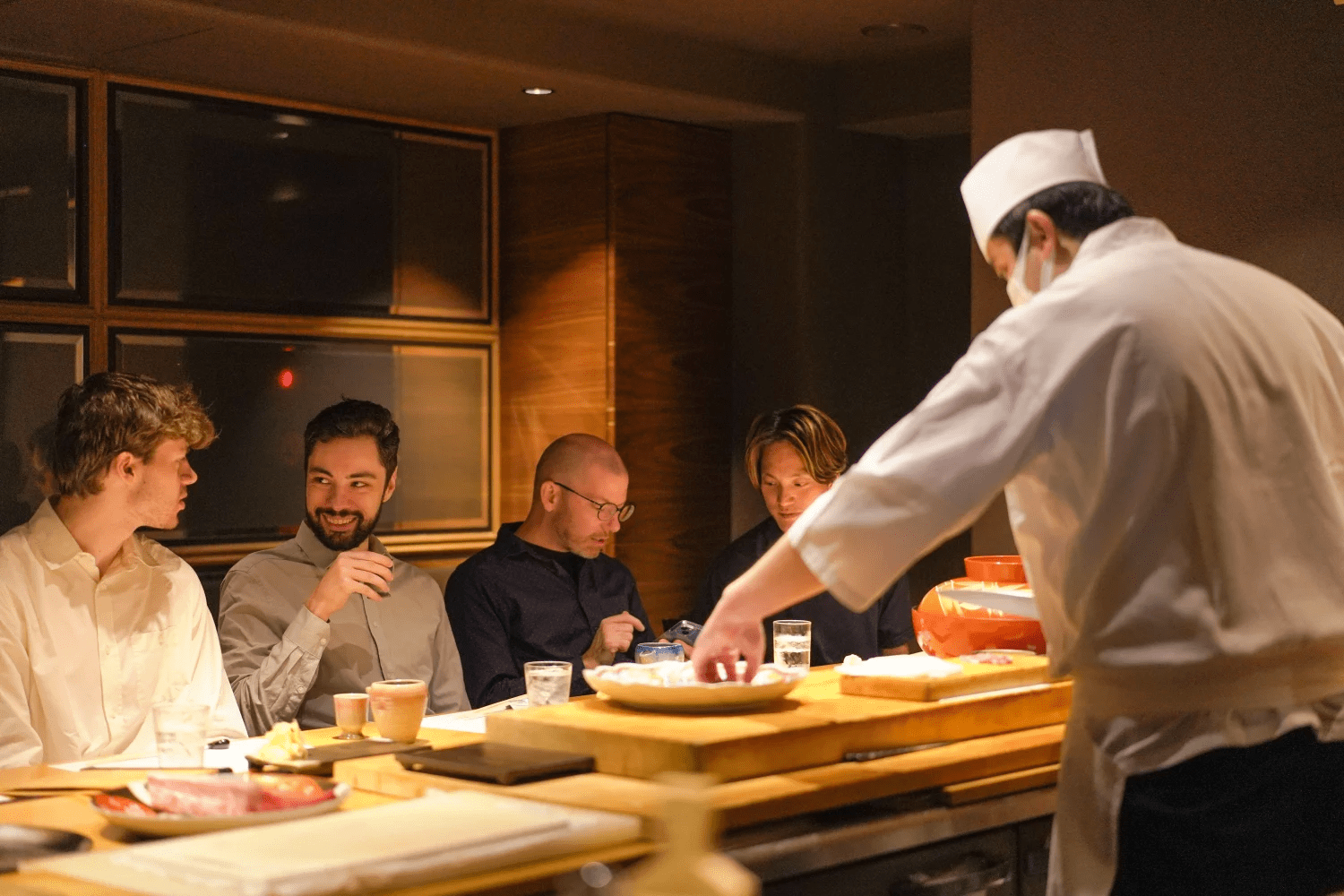
Tokyo, known as a gourmet city even among the world's cities, has shops scattered throughout where you can eat exquisite Japanese cuisine, and there are so many to choose from that you may be confused. If you want to enjoy Japan's finest sophisticated Japanese cuisine, have a local guide show you to high-class restaurants.
The Finest Quality Sushi & Tempura Dining Experience in Ginza allows you to dine at a sushi restaurant highly rated on Japanese gourmet sites and a tempura restaurant that has earned Michelin stars in Ginza, where high-class restaurants line the streets.
2026 November Asakusa Event Highlights
November in Asakusa is characterized by many places reaching their peak autumn foliage viewing season from mid-month onward. In Asakusa, numerous festivals concluding the autumn season are held, including Tokyo's largest-scale Tori-no-Ichi Festival.
Join Asakusa Events that have been held since ancient times in November and experience the seasonal transition from autumn to winter.
Tori-no-Ichi
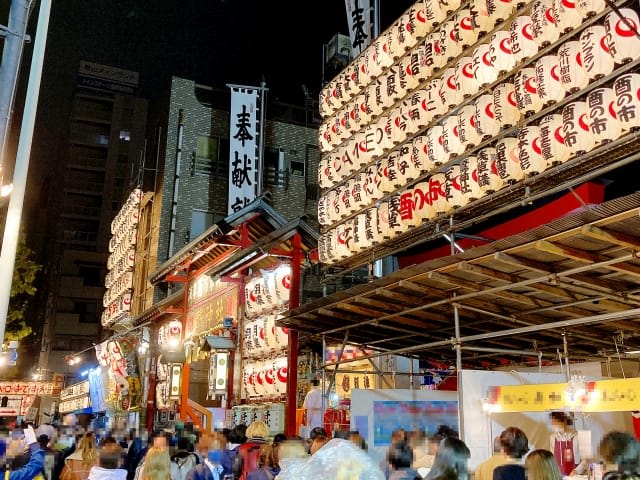
Tori-no-Ichi Festival is a traditional festival held at Otori Shrine and Chōkoku-ji Temple every year on Tori no Hi (the day that corresponds to the bird "Tori" in the twelve zodiac animals used to count years) in November, where people pray for business prosperity and good fortune. Within the shrine grounds, kumade rakes (derived from tools that gather things together, symbolizing raking in good fortune) and other lucky charms are sold in every available space.
The luxurious kumade decorated abundantly with lucky charms such as koban (old coins) and senryō-bako (boxes for storing money) are enjoyable just to look at. I visit every year and purchase kumade by negotiating prices (a custom of Tori-no-Ichi, though typically the discounted amount is given back to the shop as a gratuity).
When purchasing kumade, please enjoy the interaction with the shop staff as well.
At this Asakusa Event, food stalls serving oden and yakitori also appear, so strolling around while eating is also recommended.
<Information>
- Schedule: November 2026 (to be determined)
- Access: 8-minute walk from Asakusa Station on the Ginza Line
- Admission: Free
- Website: https://torinoichi.jp/
Fire-Walking Ritual
Source:Official website
The Fire-Walking Ritual is a traditional Asakusa Event where people walk barefoot over burning charcoal while praying for good health and fire prevention, held at Akiba Shrine, which enshrines the deity of fire prevention.
The fire-walking begins with Shinto priests crossing for purification purposes, followed by local participants, and finally general visitors can also participate. I challenged myself at this event and walked over the charcoal.
I was worried about getting burned by the bright red burning charcoal that looked so hot, but when I actually walked on it, it wasn't too hot and I was able to cross safely.
Since the experience of walking barefoot over burning charcoal is quite rare, please give it a try.
<Information>
- Schedule: November 6, 2026
- Access: 5-minute walk from Iriya Station on the Hibiya Line
- Admission: Free
- Website: https://www.city.taito.lg.jp/event/kanko/hiwatarinoshinzi.html
Dance of the White Heron
Source:TAITO Odekake Navi
The Dance of the White Heron is an Asakusa Event that began in 1968 to celebrate the 100th anniversary of Edo becoming Tokyo, created based on the "Washimai" depicted in Sensoji Temple's "Keian Engi Emaki."
The dance features dancers in white heron costumes as the main performers, along with samurai, stick-wielders, and feed-throwers who parade through the shrine grounds while dancing to gagaku (Japan's historic music). The sight of the white heron dancers performing with their pure white wings spread has a mystical beauty, and I found myself so captivated that I forgot to take photos.
Since this is a precious opportunity to see this historic dance up close, please enjoy watching it along with your sightseeing.
<Information>
- Schedule: November 2026 (to be determined)
- Access: 5-minute walk from Asakusa Station on the Ginza Line
- Admission: Free
- Website: https://asakusa.gr.jp/jp/?p=150
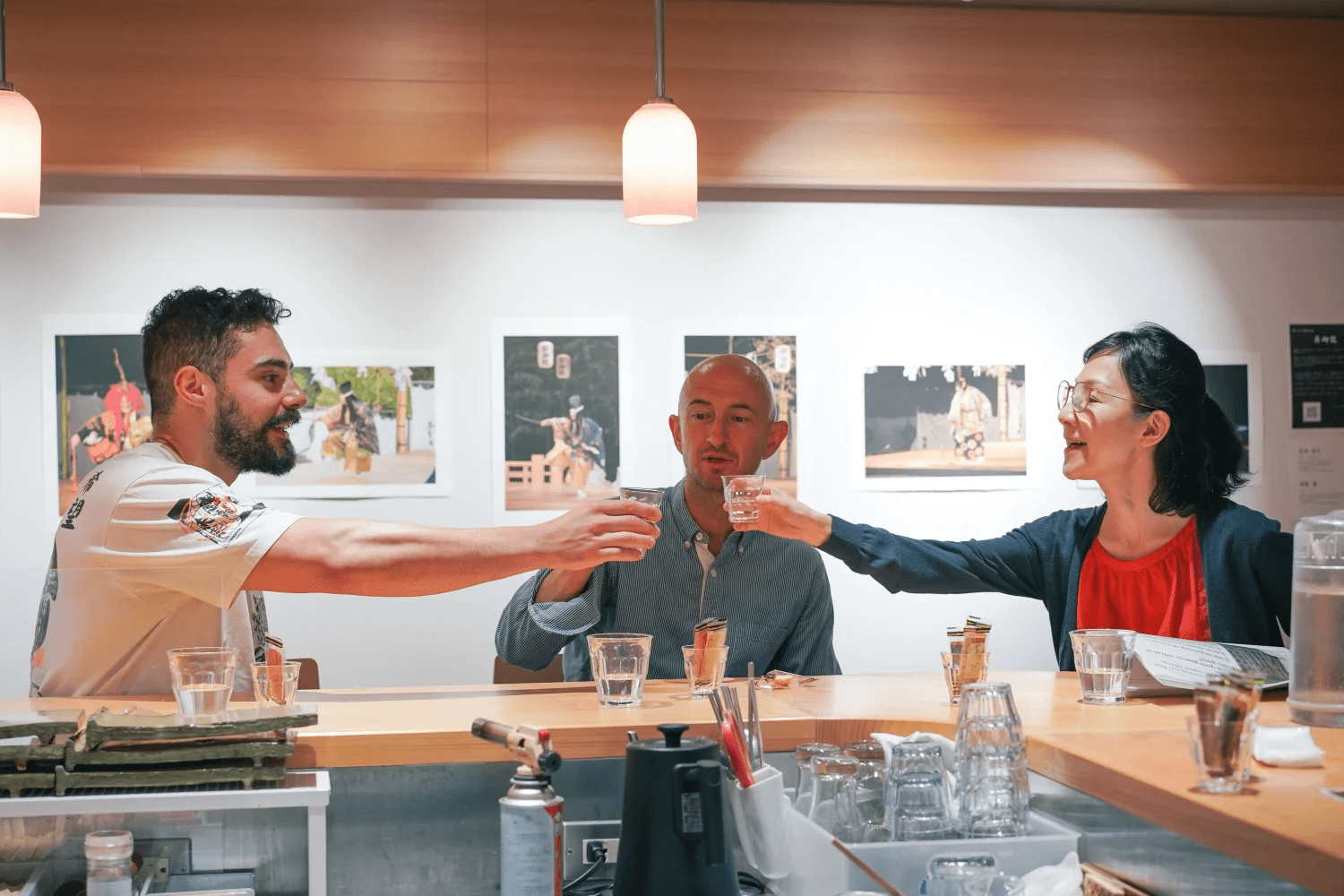
In November when you can enjoy freshly pressed sake, why not join a local tour where you can enjoy exquisite sake? Since sake has different tastes and aromas, if you savor it while having a local explain, you can enjoy Japanese sake even more deliciously!
At the Wagyu Beef & Sake Paring Foodie Tour in Ginza, you can enjoy all-you-can-drink sake and all-you-can-eat A5-grade (the highest grade of beef) wagyu teppanyaki in Ginza, the gourmet district. Delicious sake and meat are prepared, so come hungry!
2026 Asakusa Year-End and Winter Events (December)
In December in Asakusa, the maximum average temperature drops to 12.5 degrees Celsius and the minimum temperature falls to 5.2 degrees Celsius, making it severely cold. Until early December, you can enjoy autumn foliage along with sightseeing, but in the latter half, it becomes cold enough to require heavy coats or down jackets.
The year-end and winter Asakusa Events held in 2026 are packed with events where you can experience Japan's unique year-end and New Year traditions. Please check the event article for each month for details such as access.
2026 December Asakusa Event Highlights
In December in Asakusa, many events are prepared to liven up the year-end and New Year period. My recommendation is Sensoji Temple's "The New Year's Eve bell" and "Hatsumode" (New Year's shrine visit). I always listen to "The New Year's Eve bell" struck at the moment it becomes January 1st to truly feel that the New Year has arrived, and then head straight to "Hatsumode" to pray for a safe year.
These are Asakusa Events based on Japan's traditional year-end and New Year customs that get lively with many people. If it's difficult to go in 2025, going in 2026 is also a good choice, so please experience it at least once in your life.
Summary
Asakusa has a wealth of events throughout the year that can only be experienced during specific times, and by participating in each Asakusa Event, you'll understand why it's one of Tokyo's premier tourist spots.
The events range from those with long-standing traditions to those where you can feel the nature of the four seasons, hands-on experiences, and those that get lively with many participants, so choose ones that match your preferences.
Since noteworthy Asakusa Events are scheduled every month, if you enjoy events along with sightseeing, you'll definitely get to know Asakusa more deeply!
However, the reality is that even Japanese people find it difficult to deeply understand and enjoy Asakusa's traditions and culture. That's exactly why, if you want to enjoy Asakusa to the fullest, please join a local tour.
If you sightsee with a guide who deeply understands Asakusa and its culture, and the traditions rooted in its shrines and temples, your sightseeing will become several times more enjoyable!
